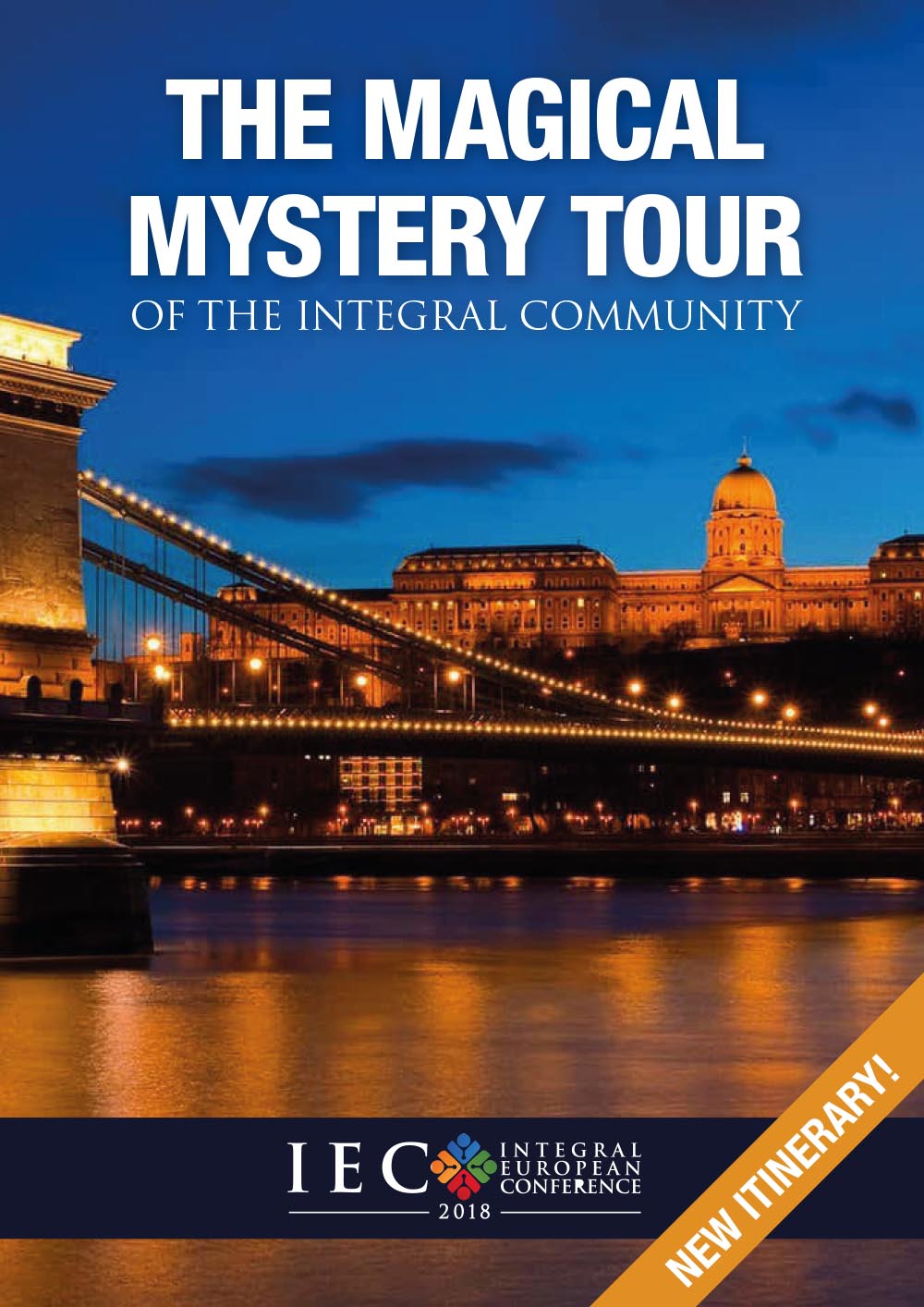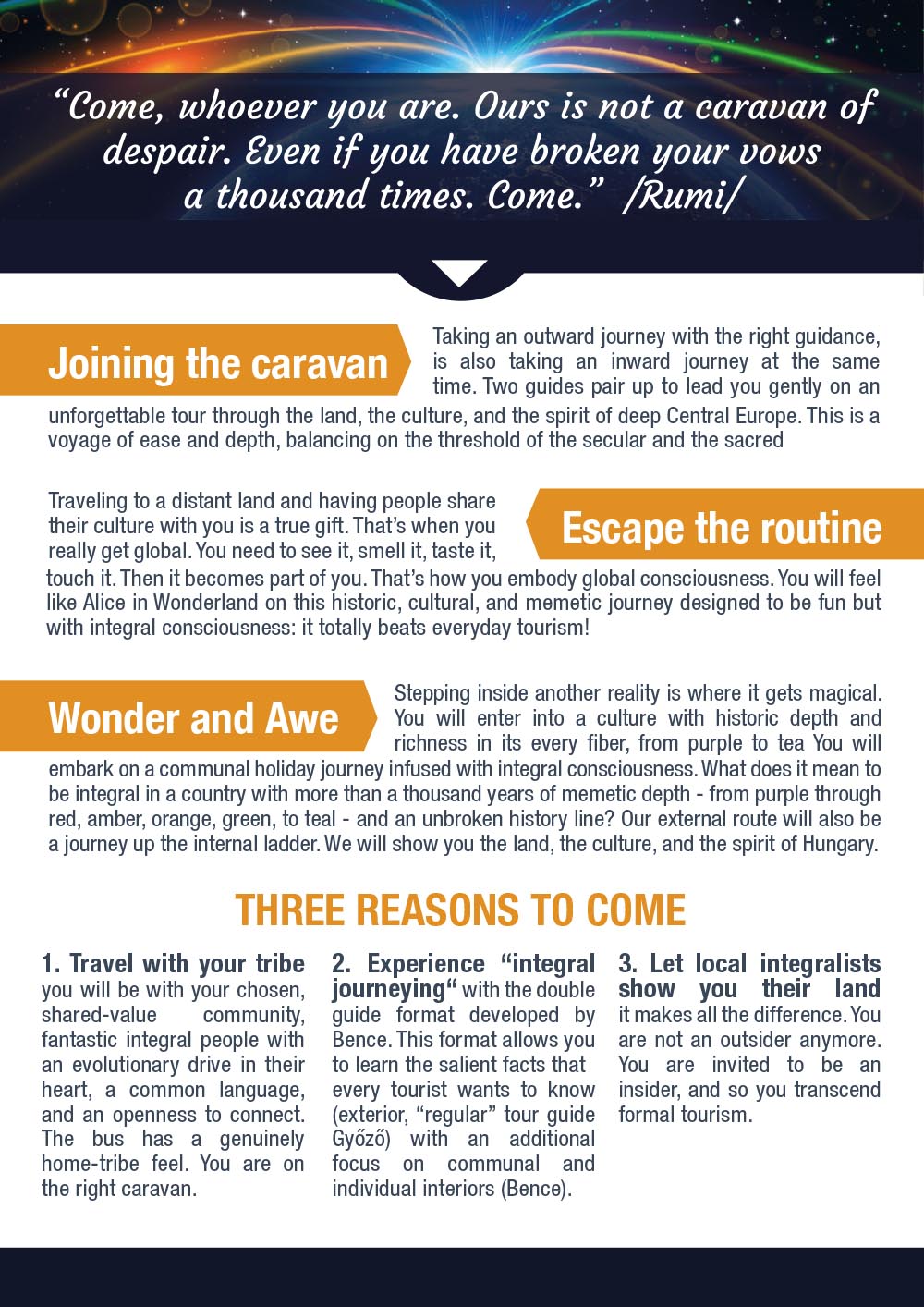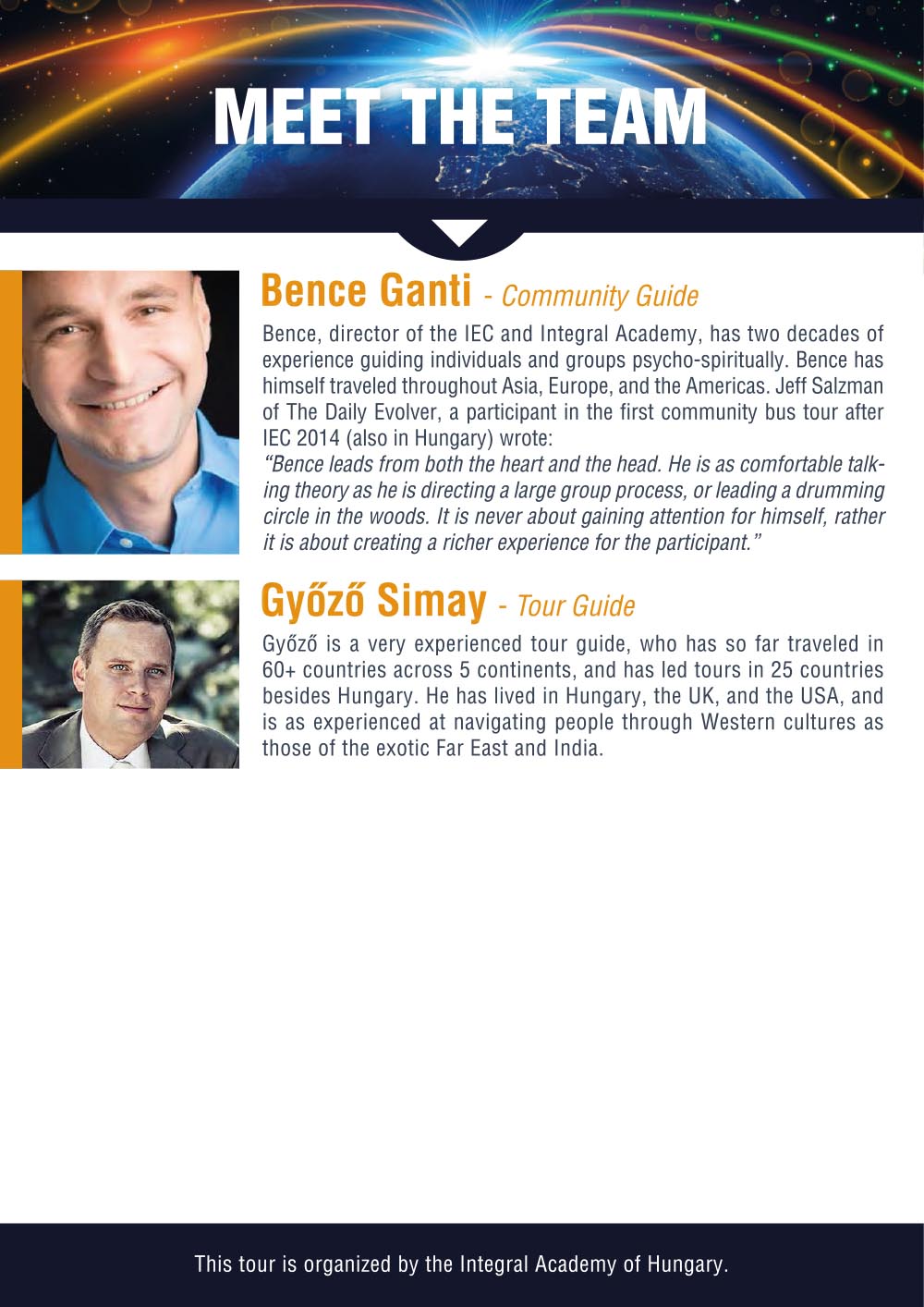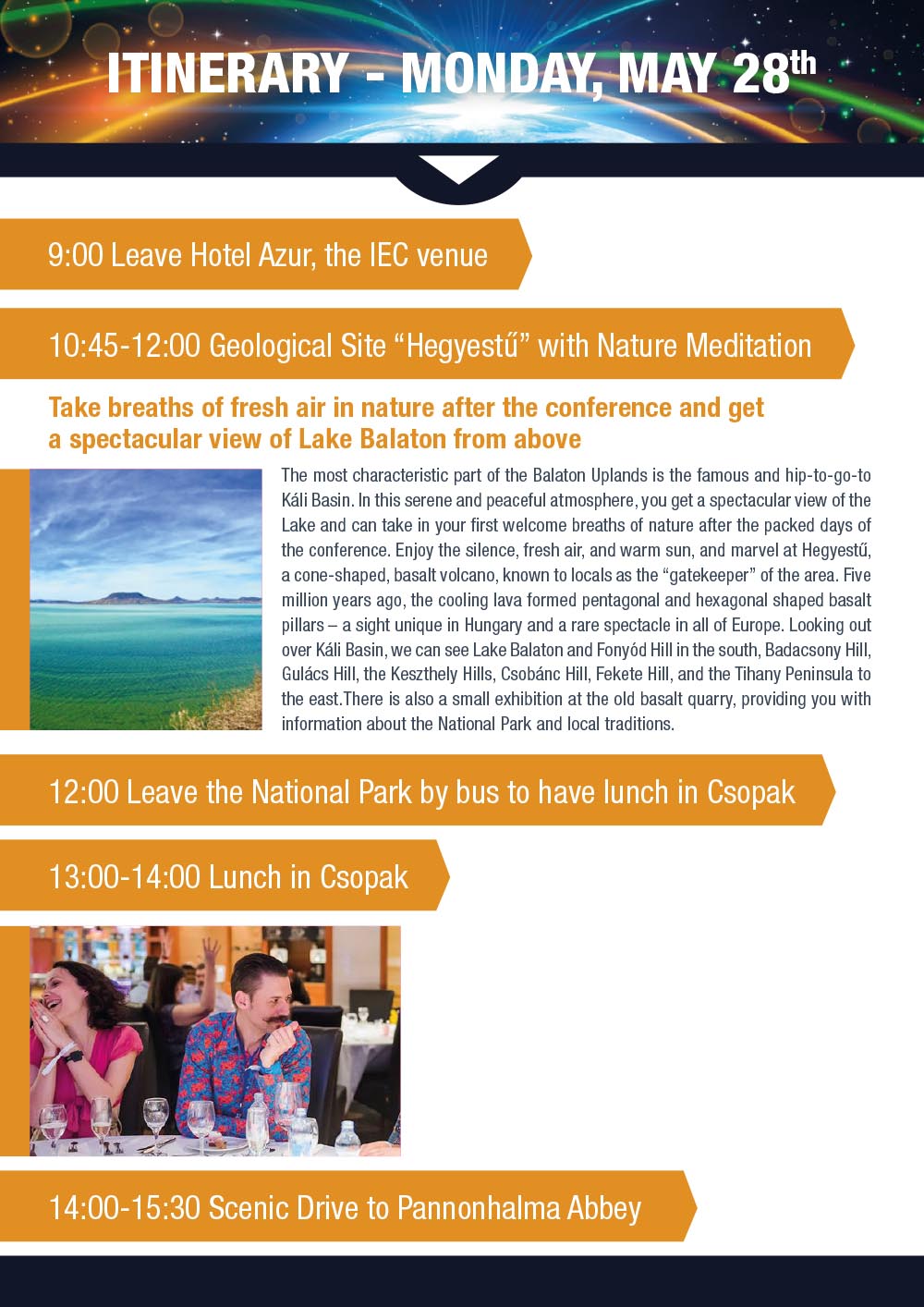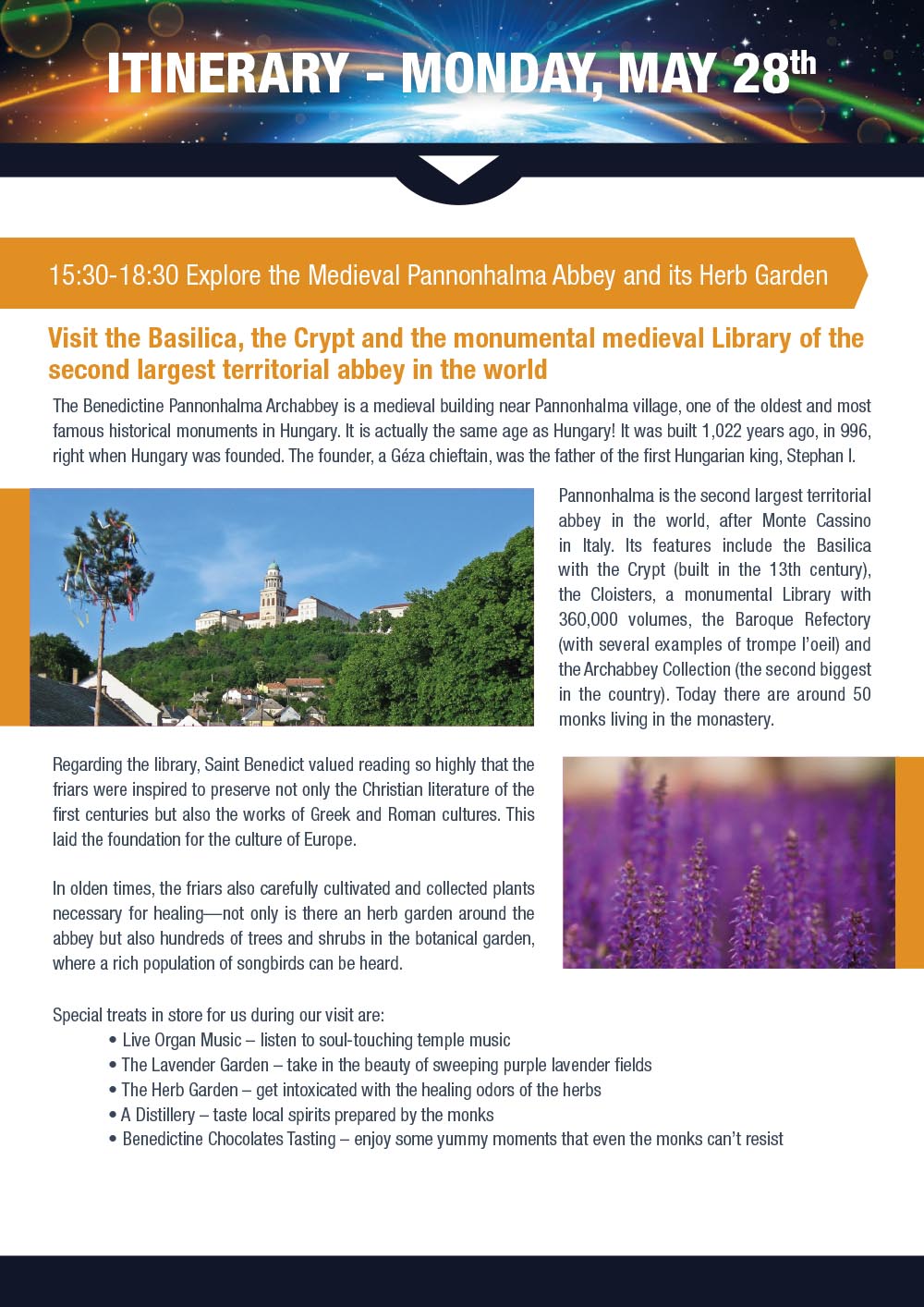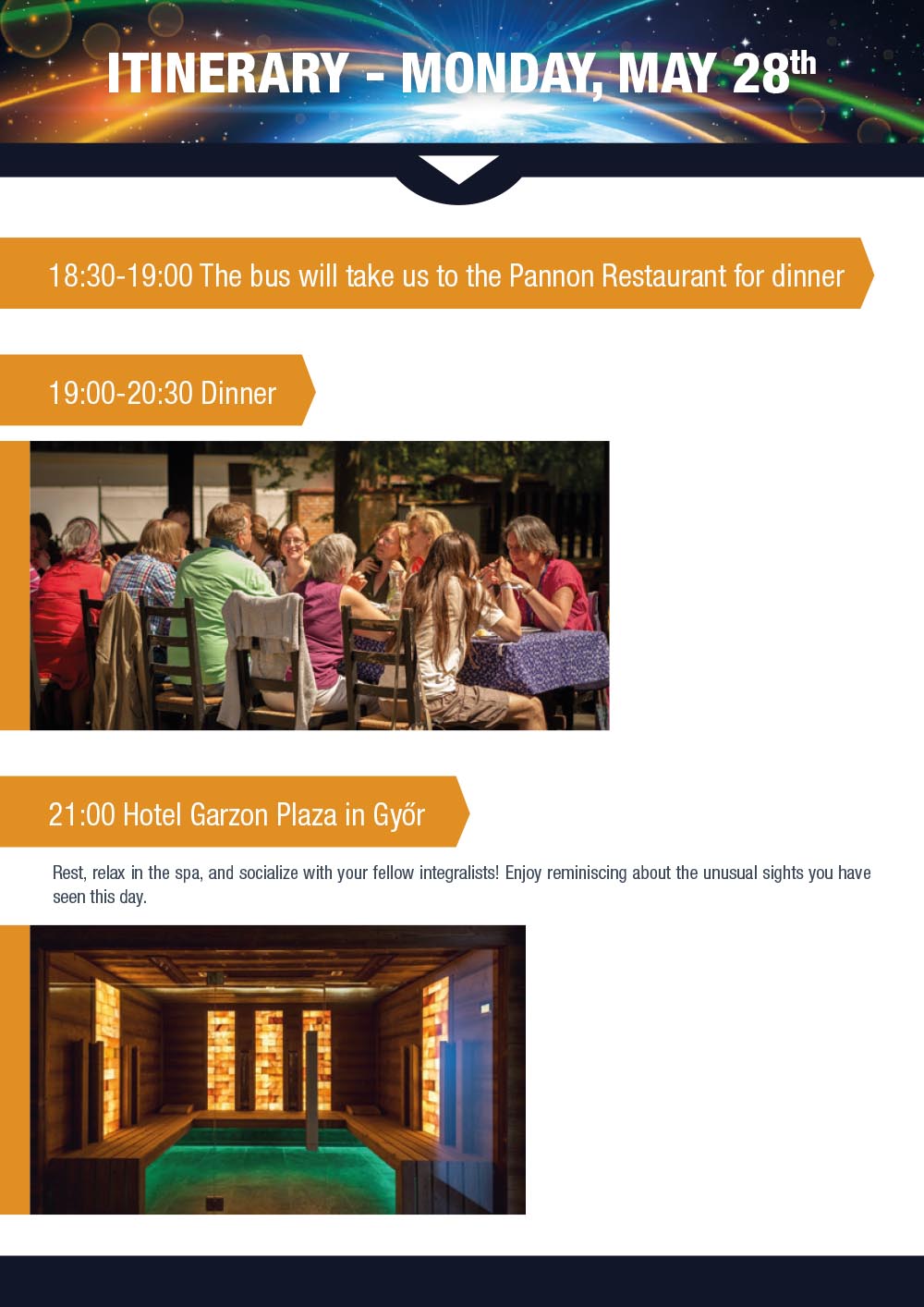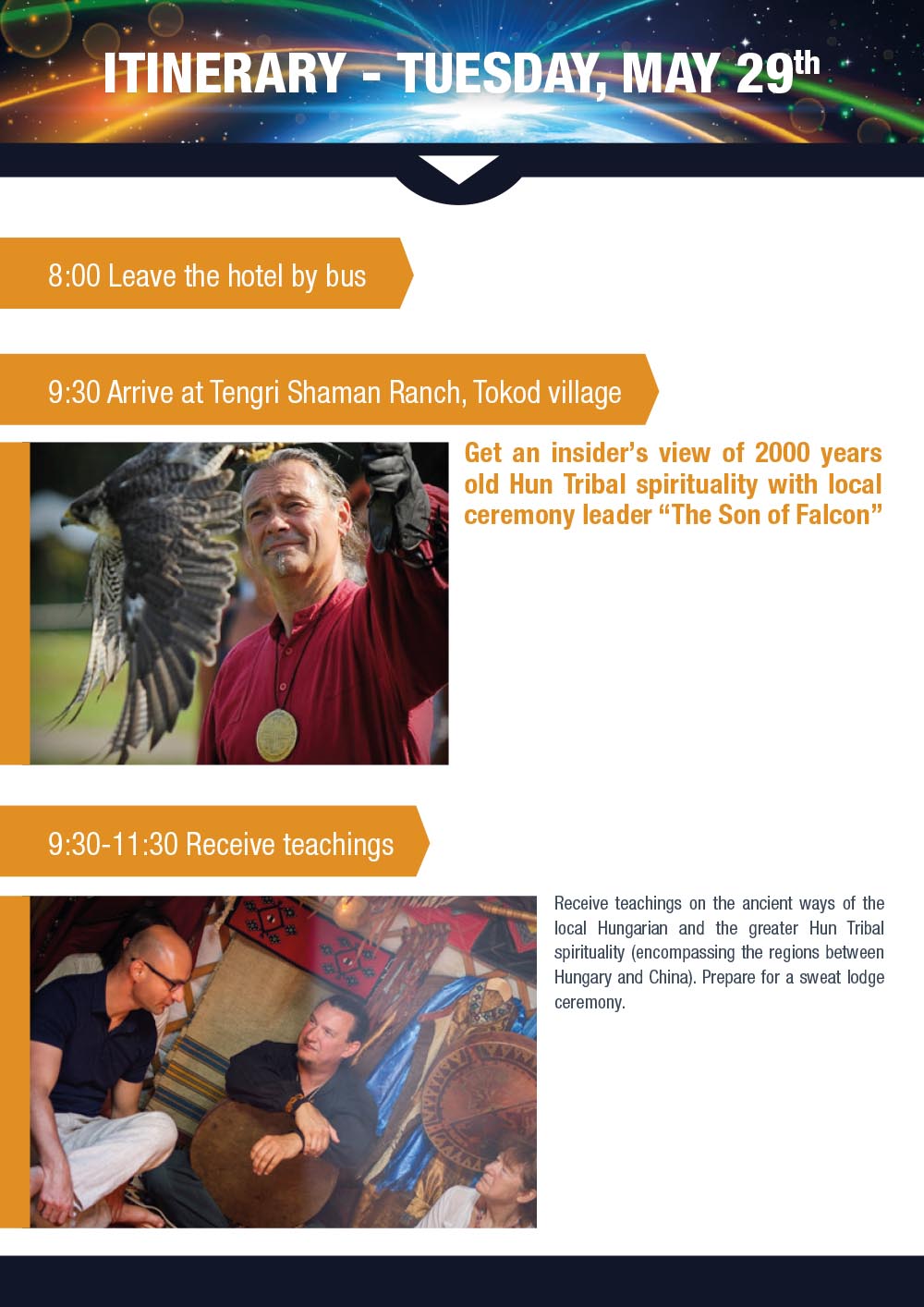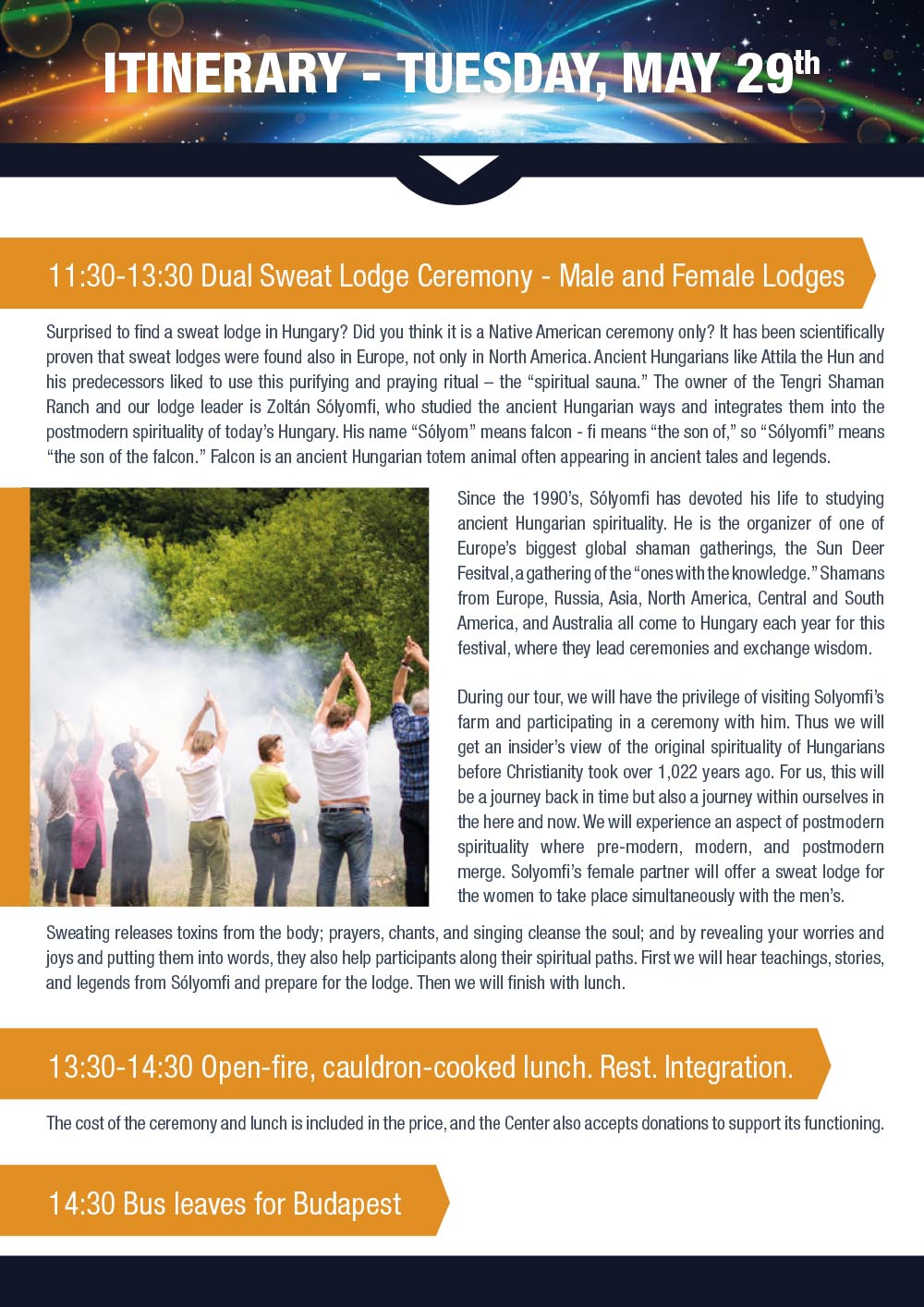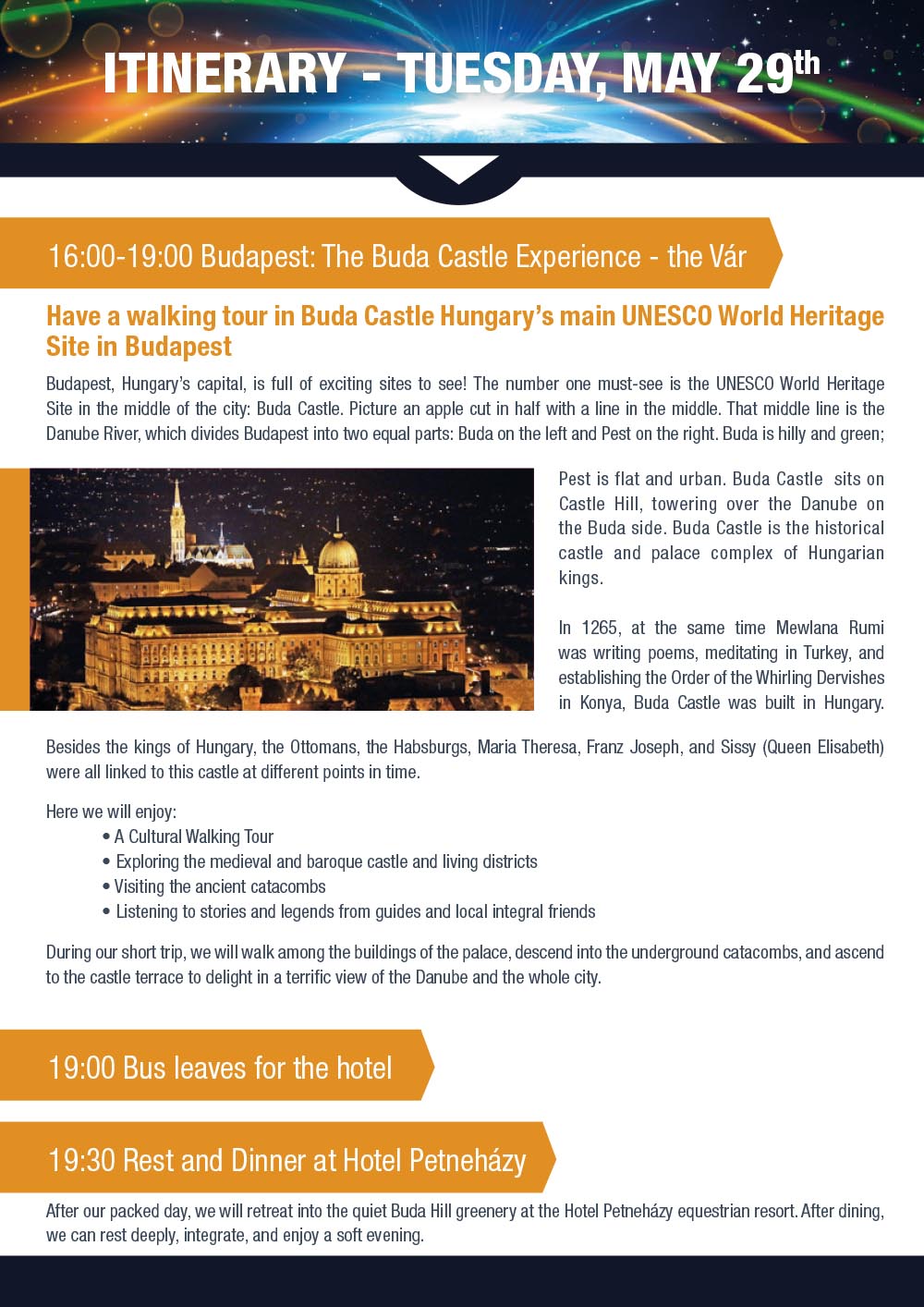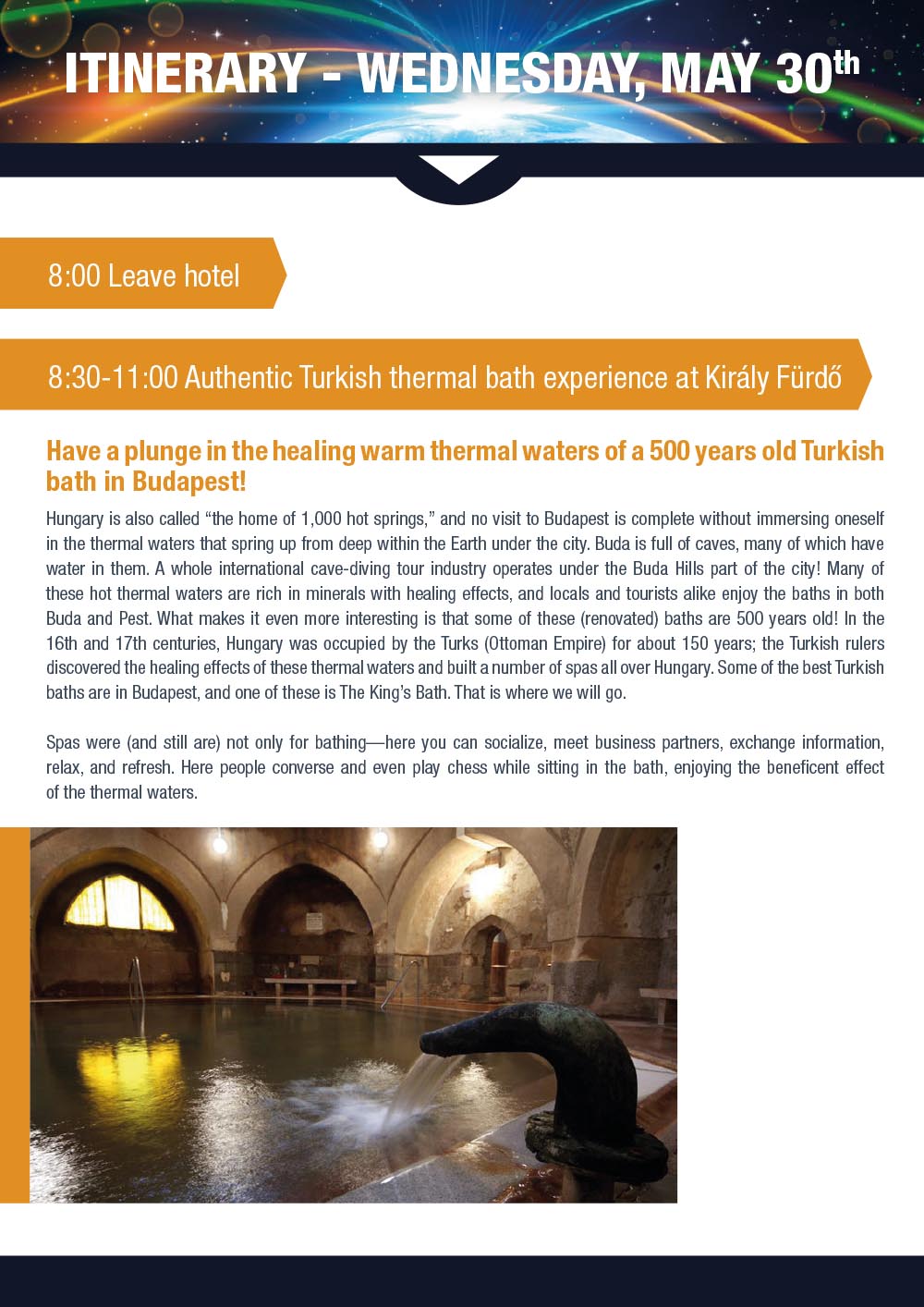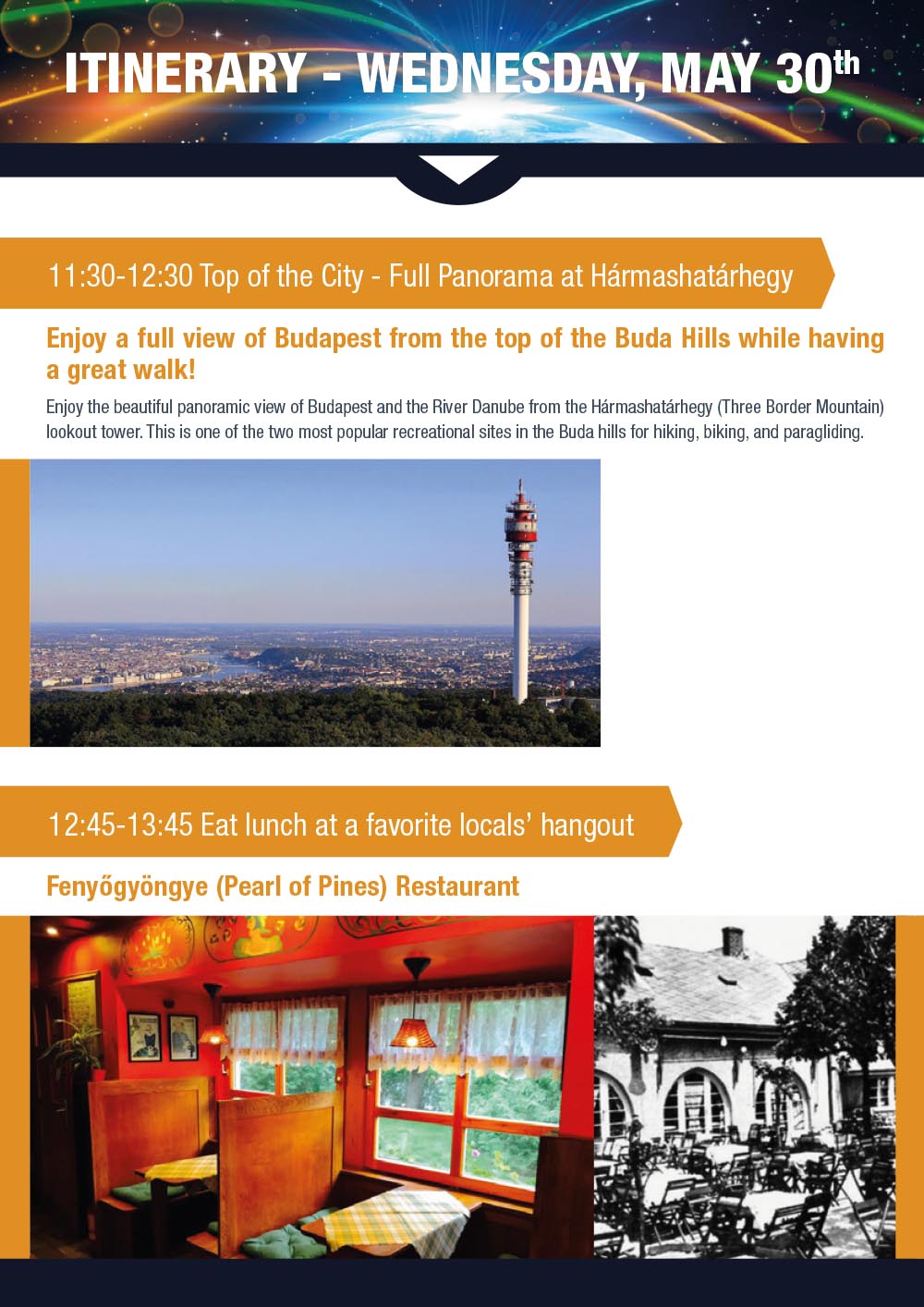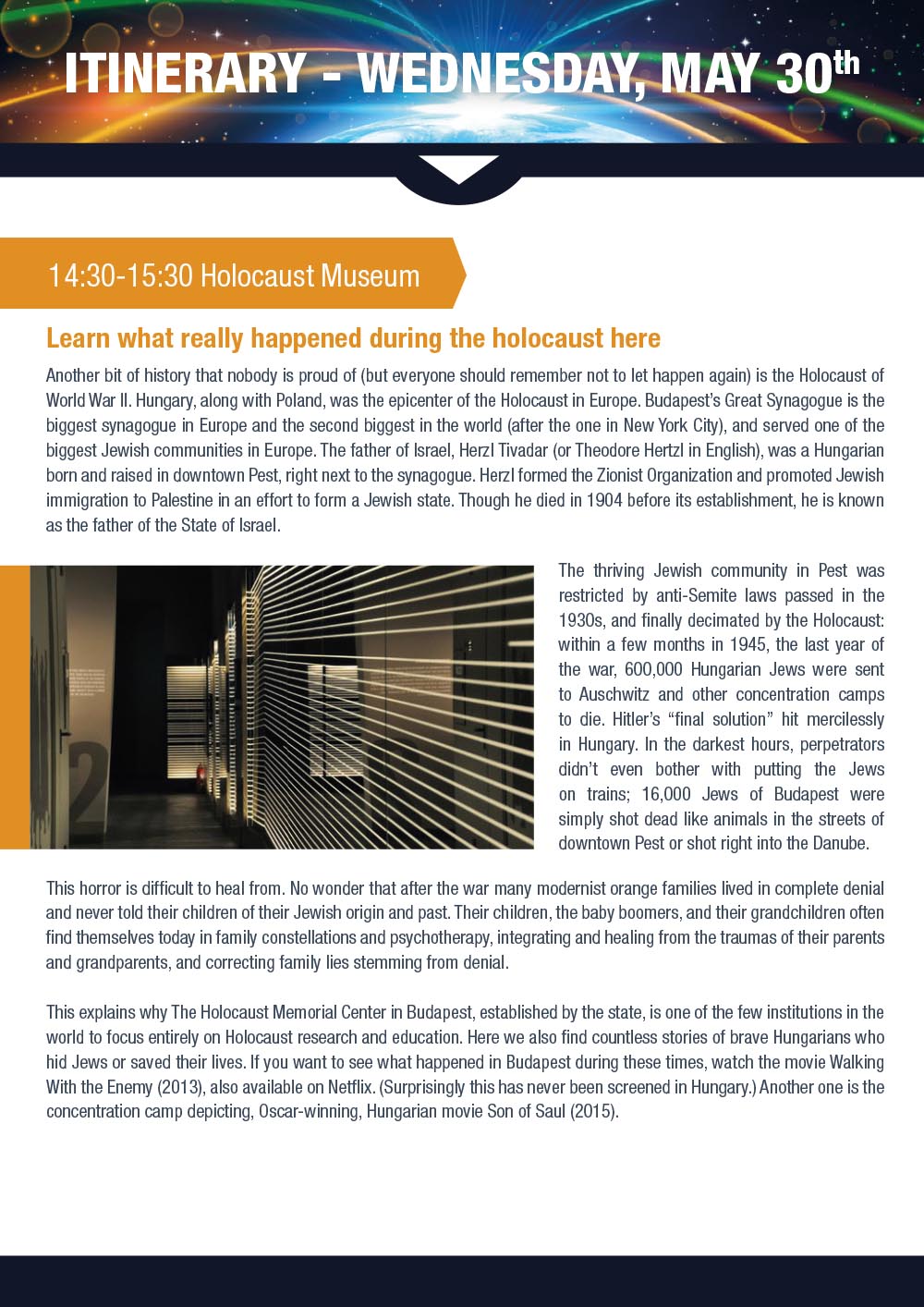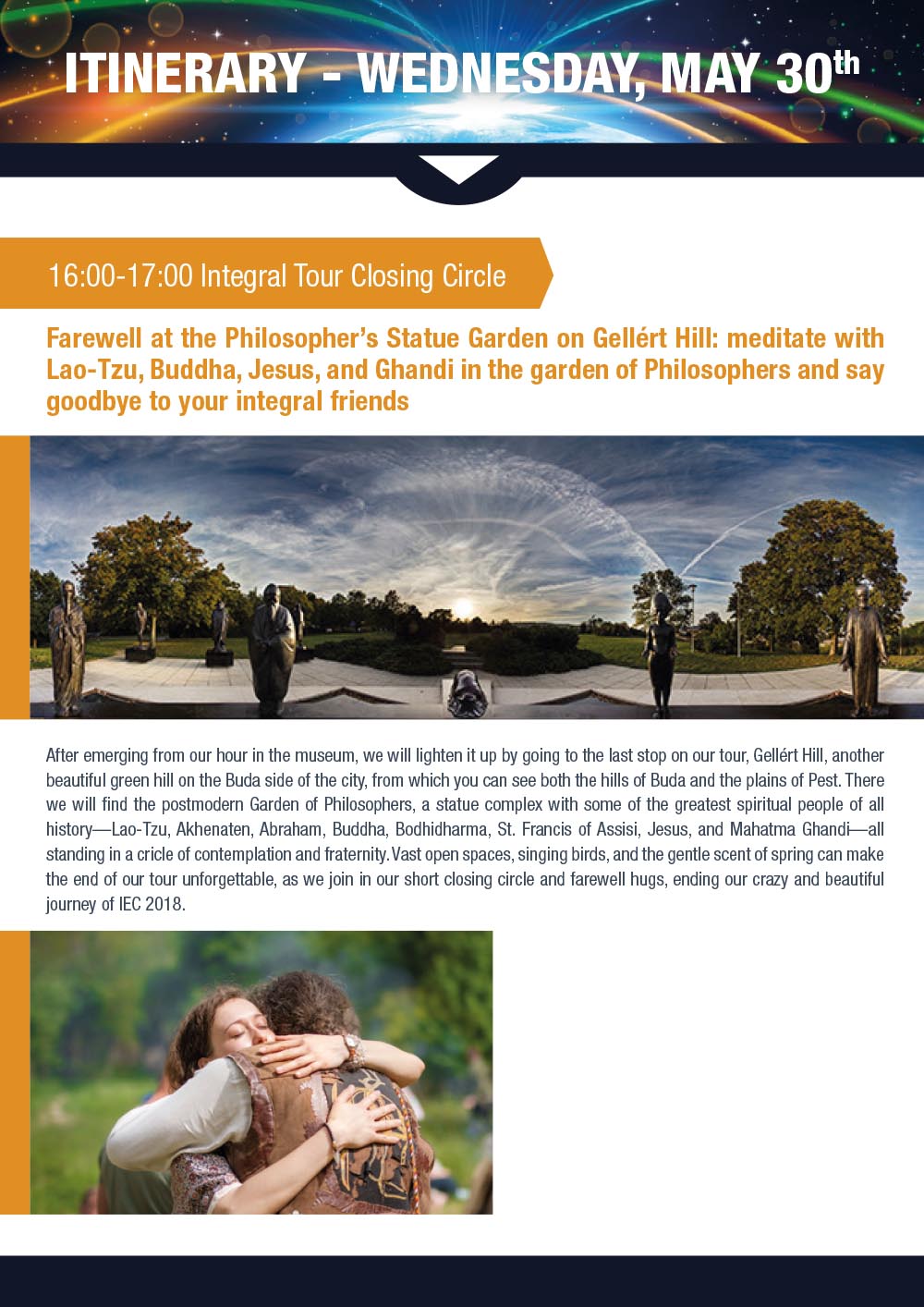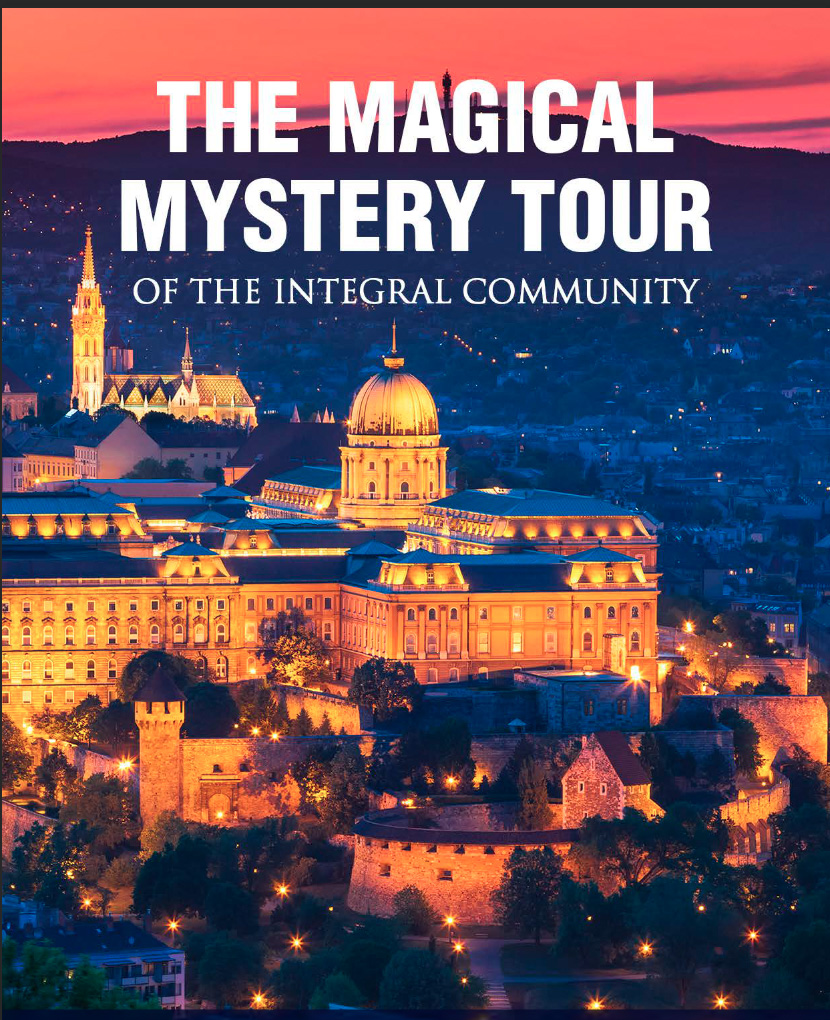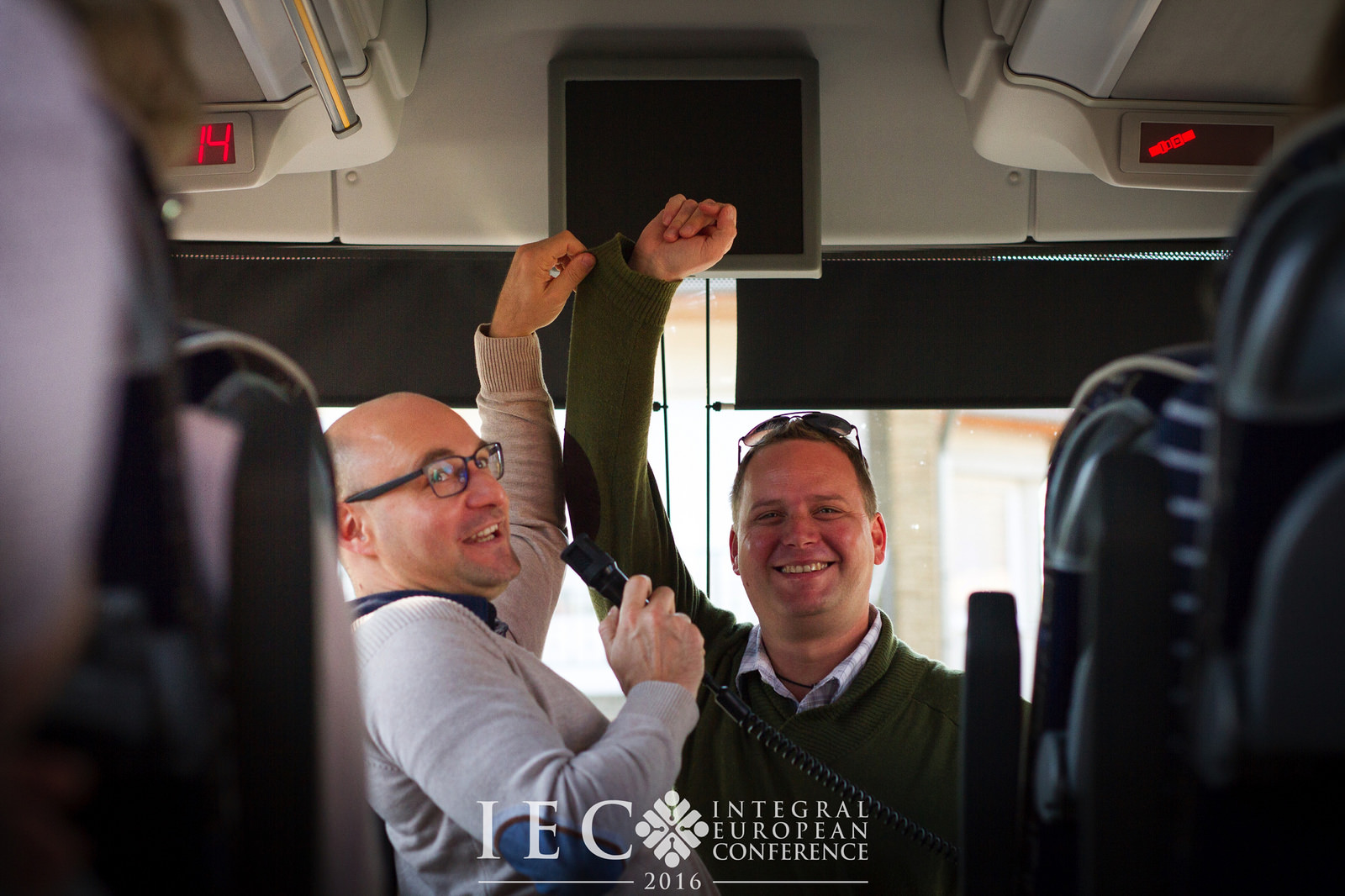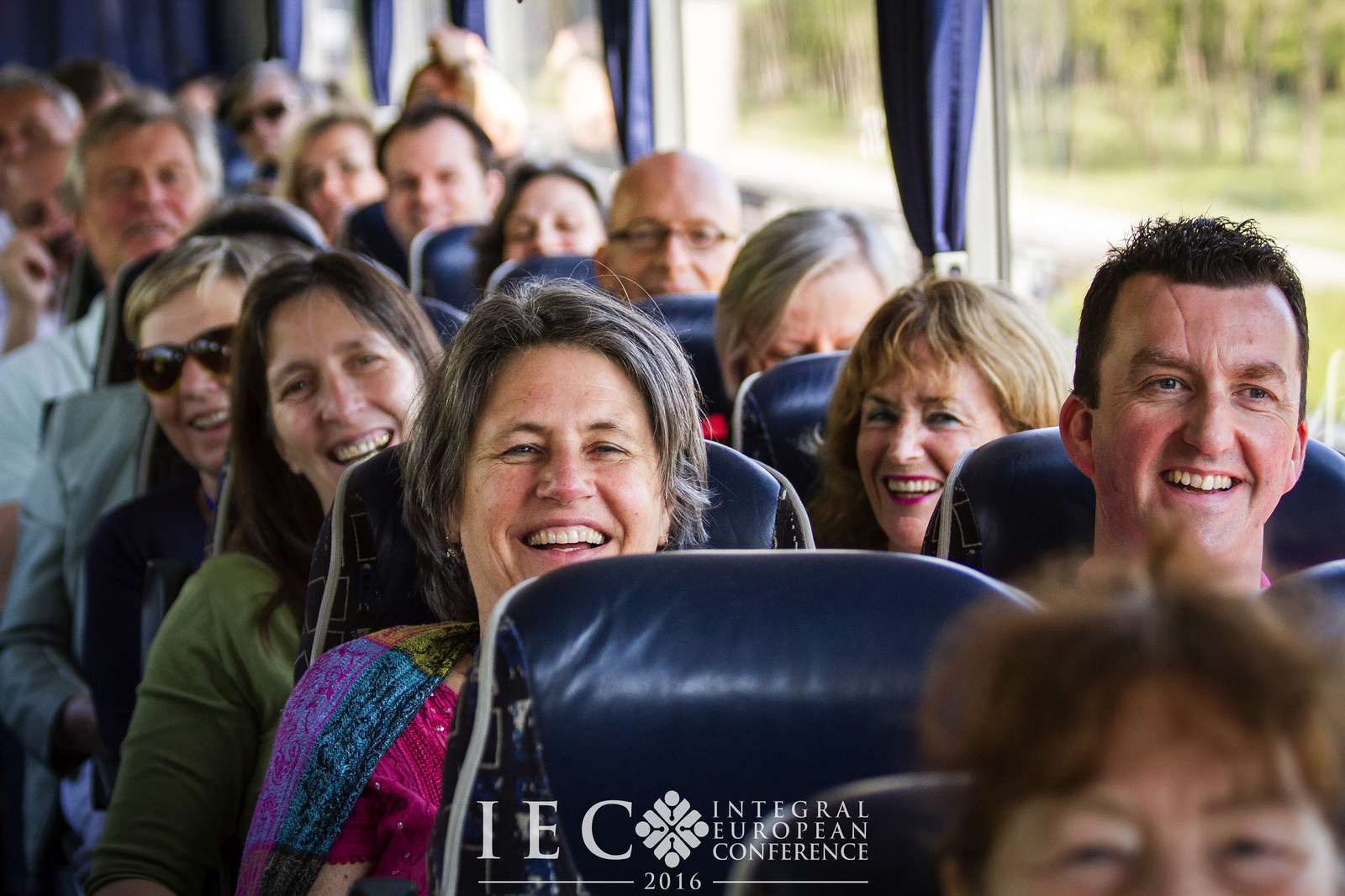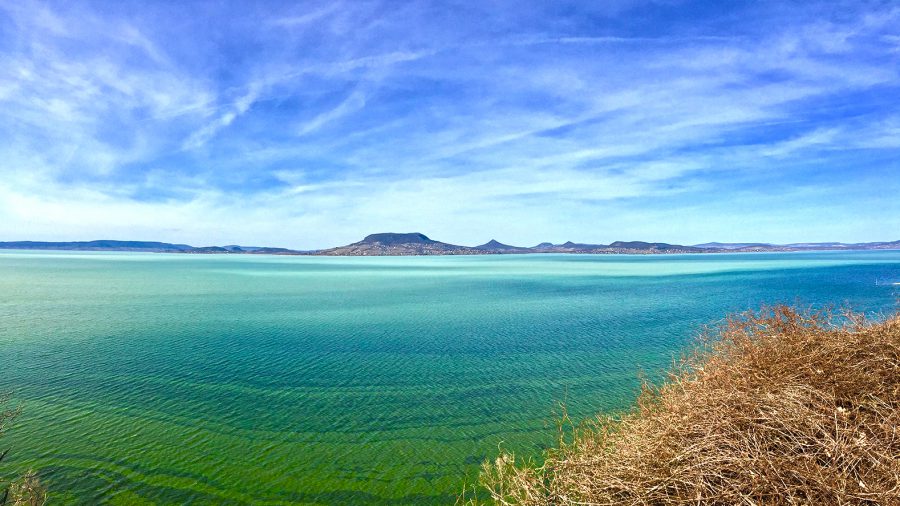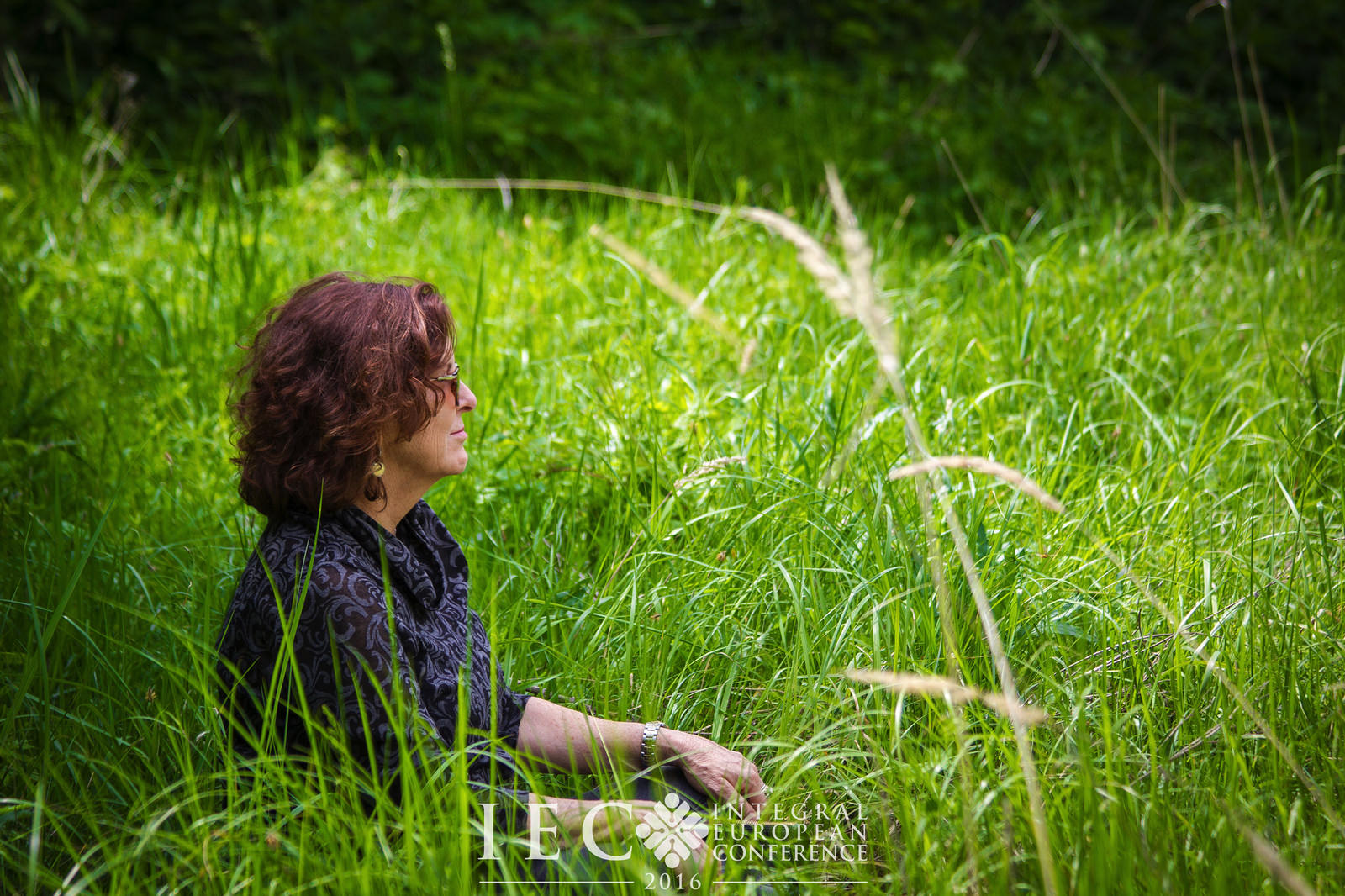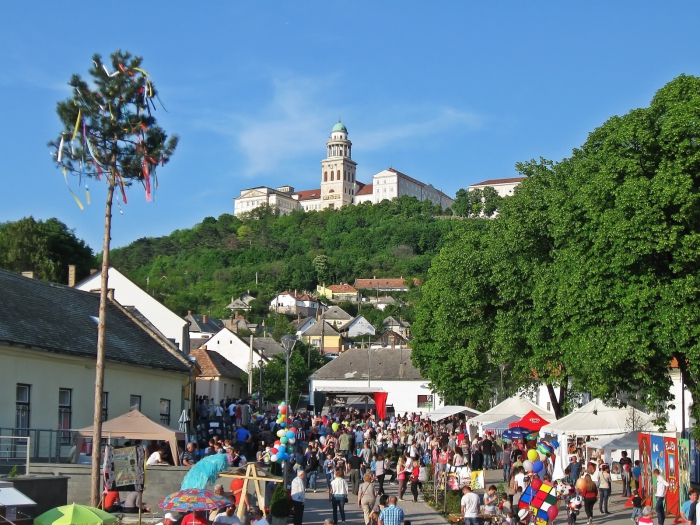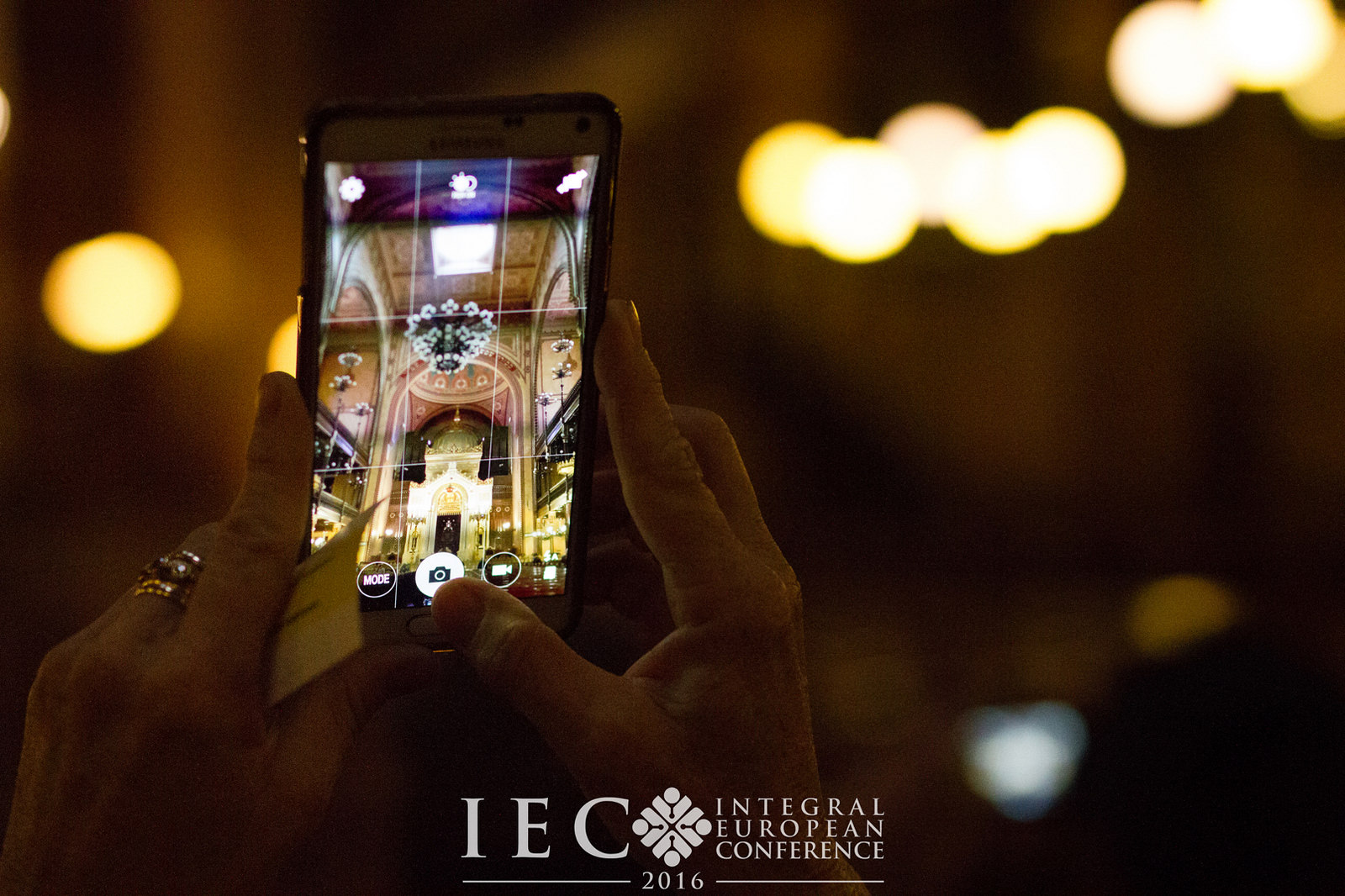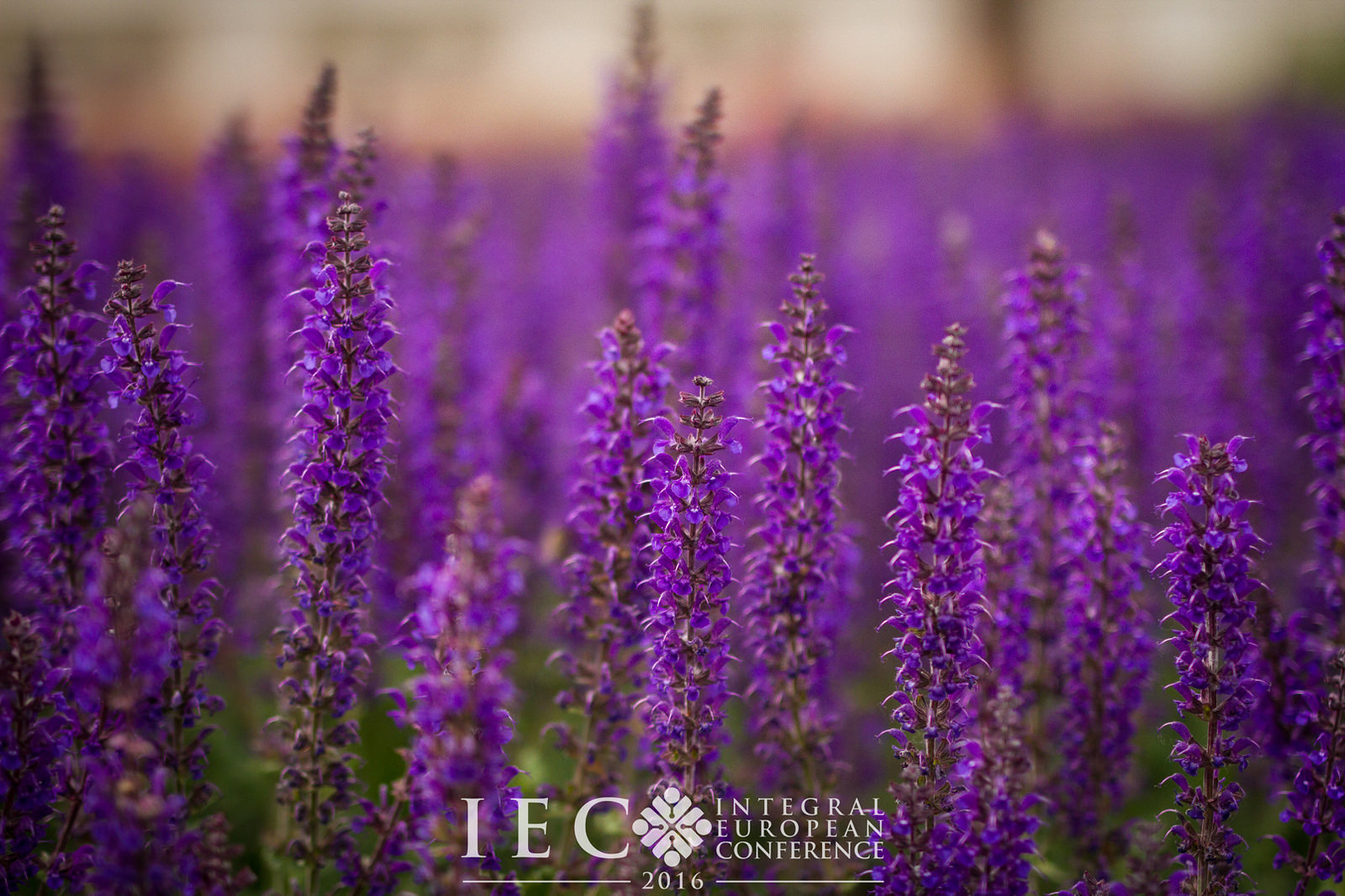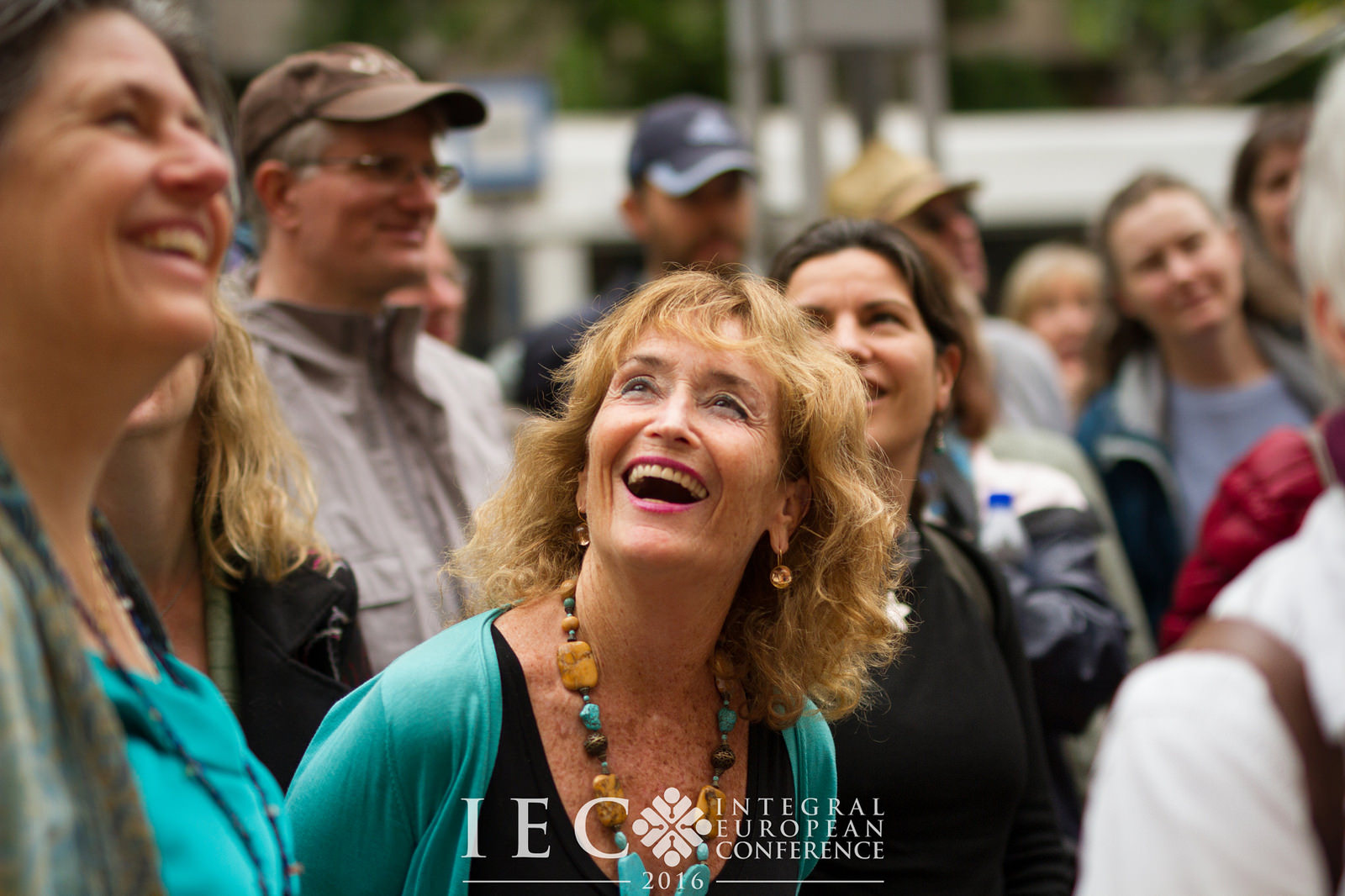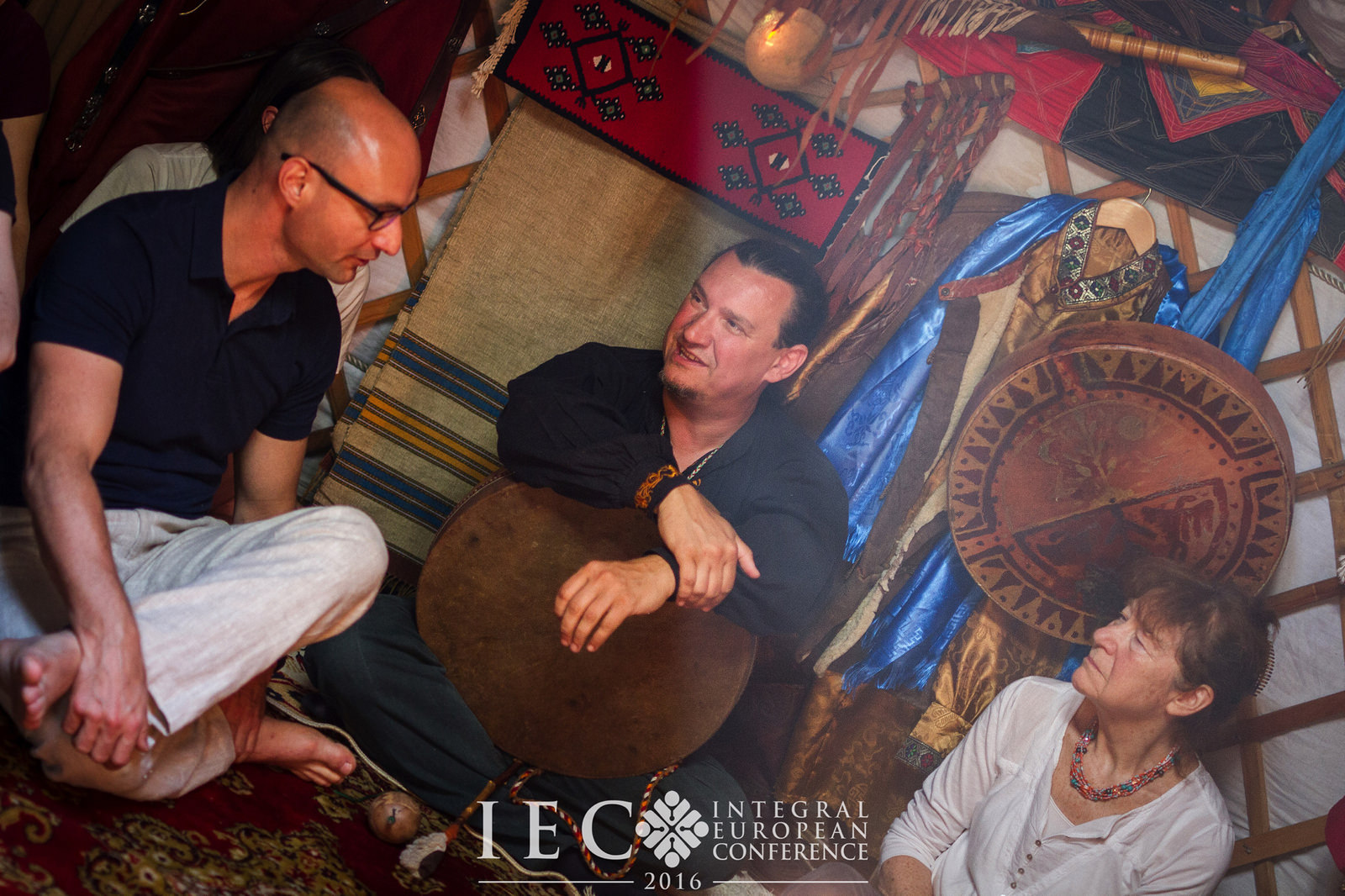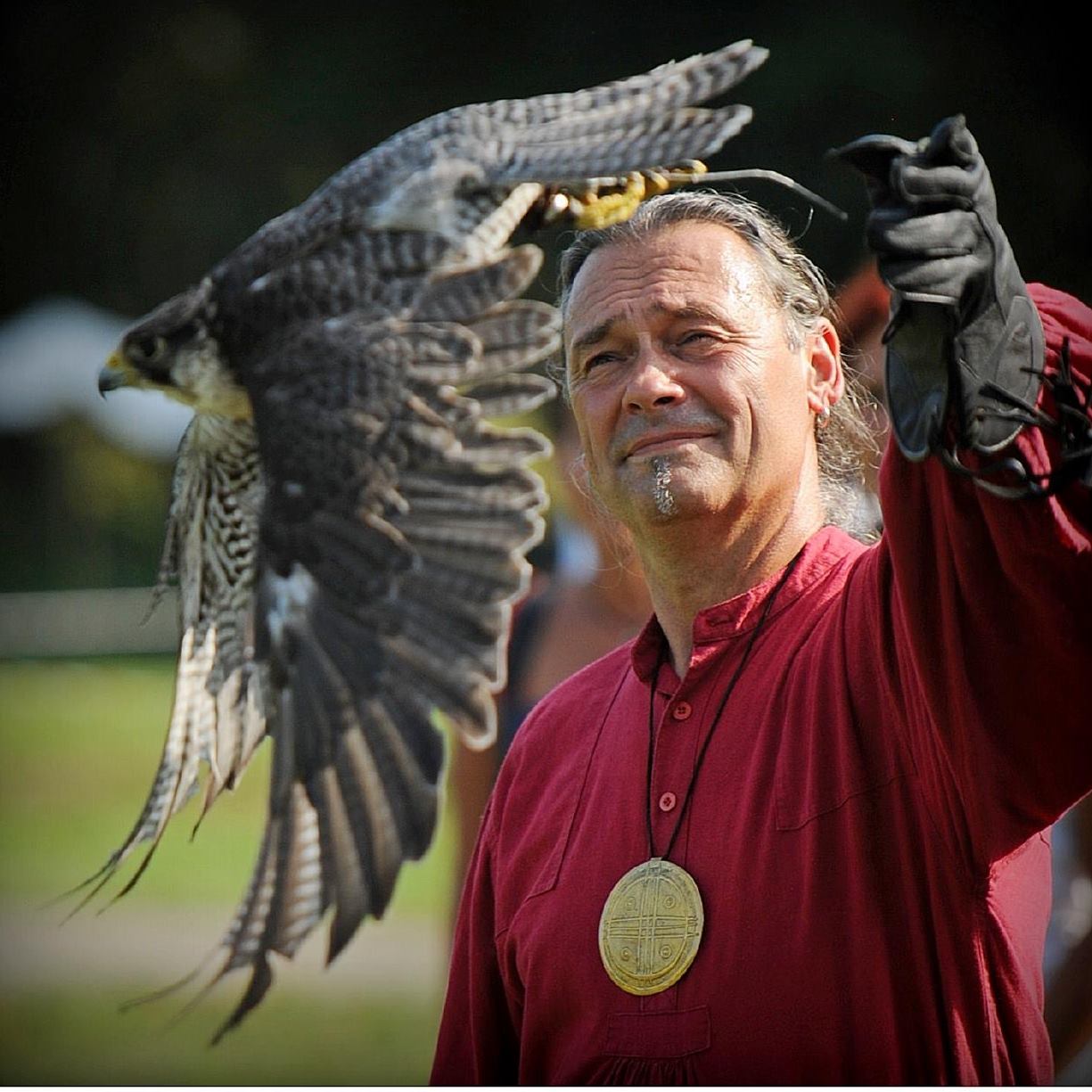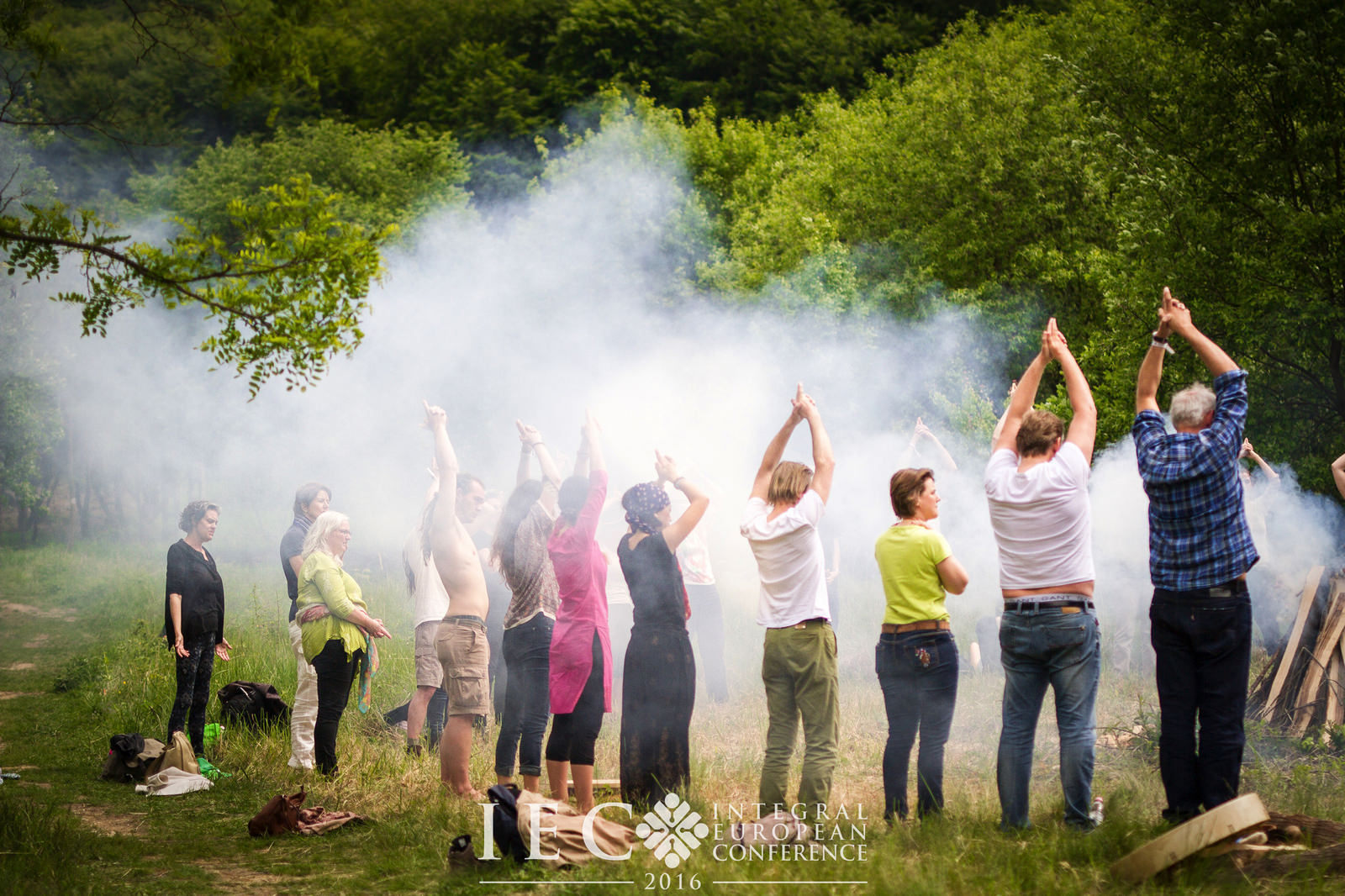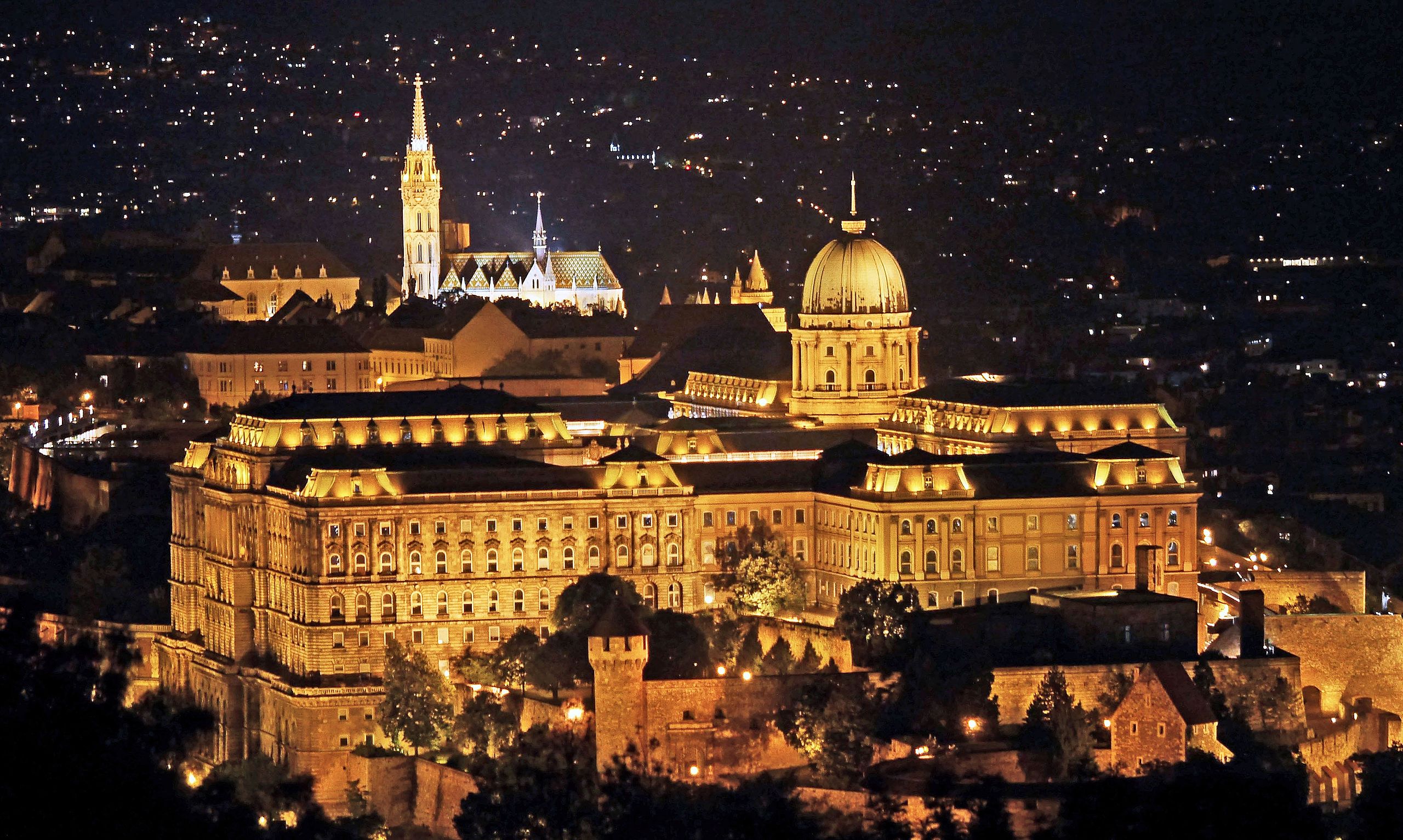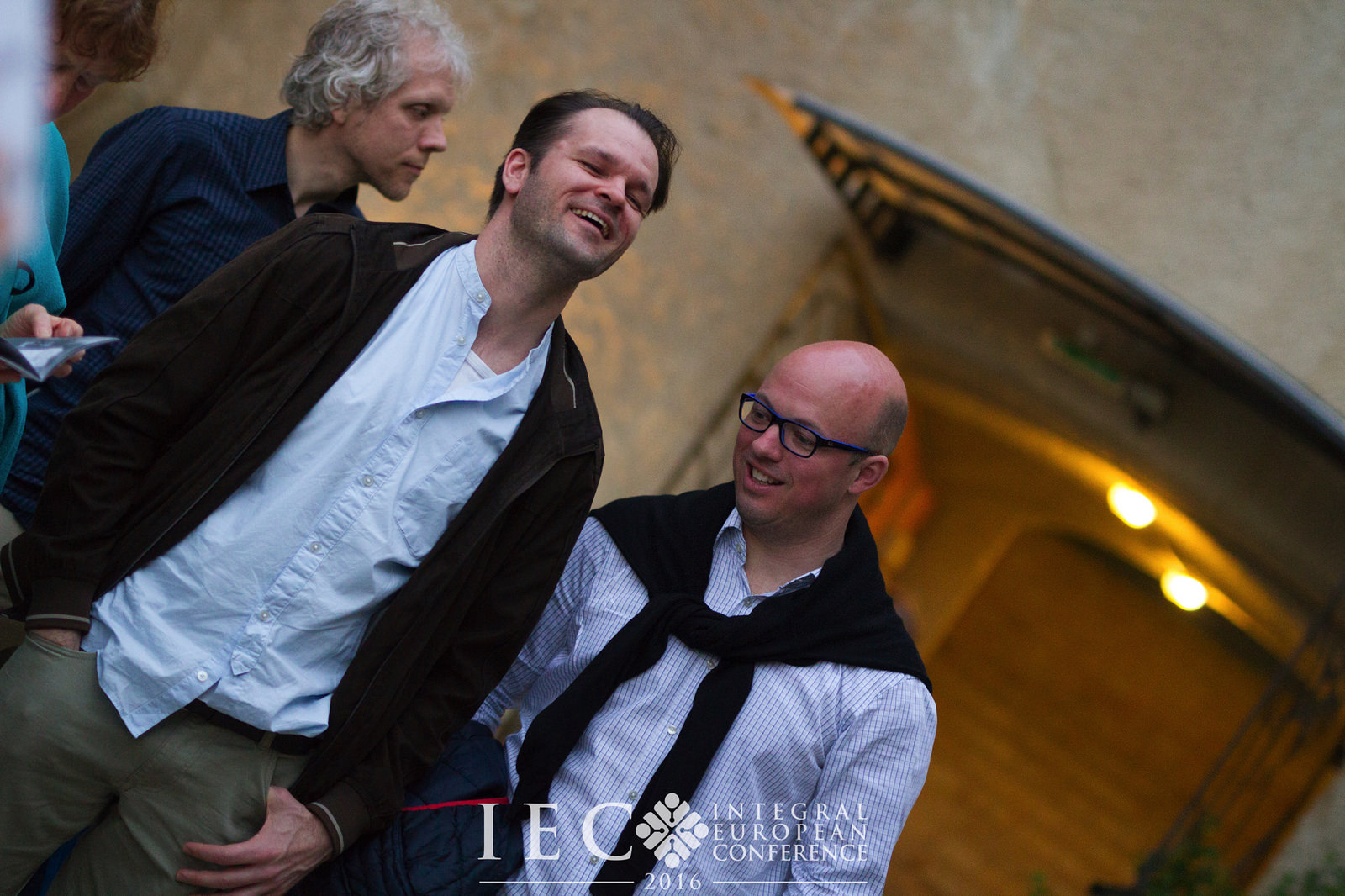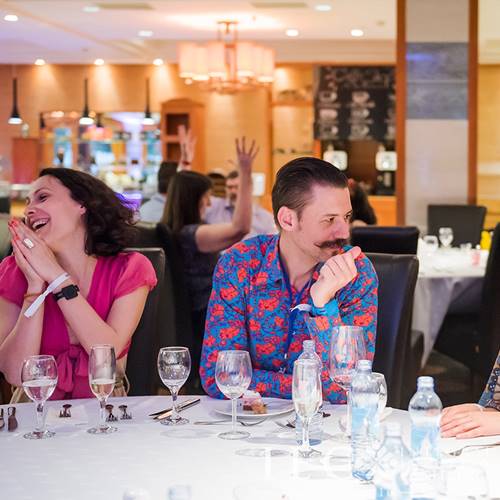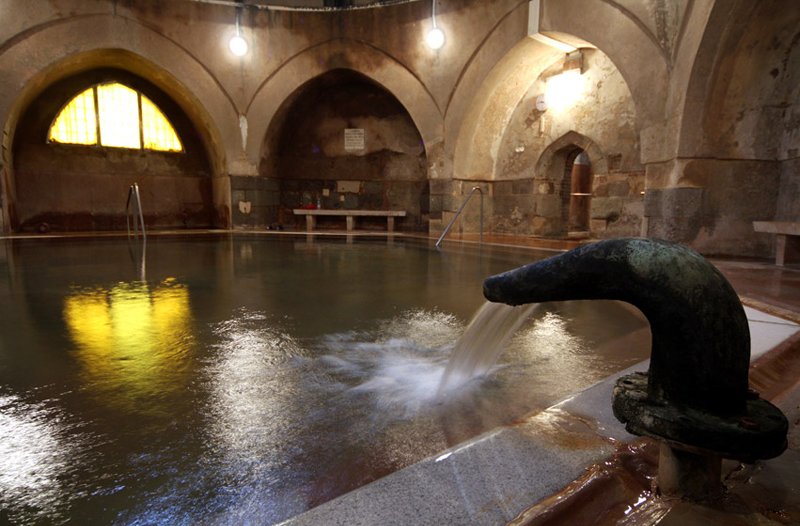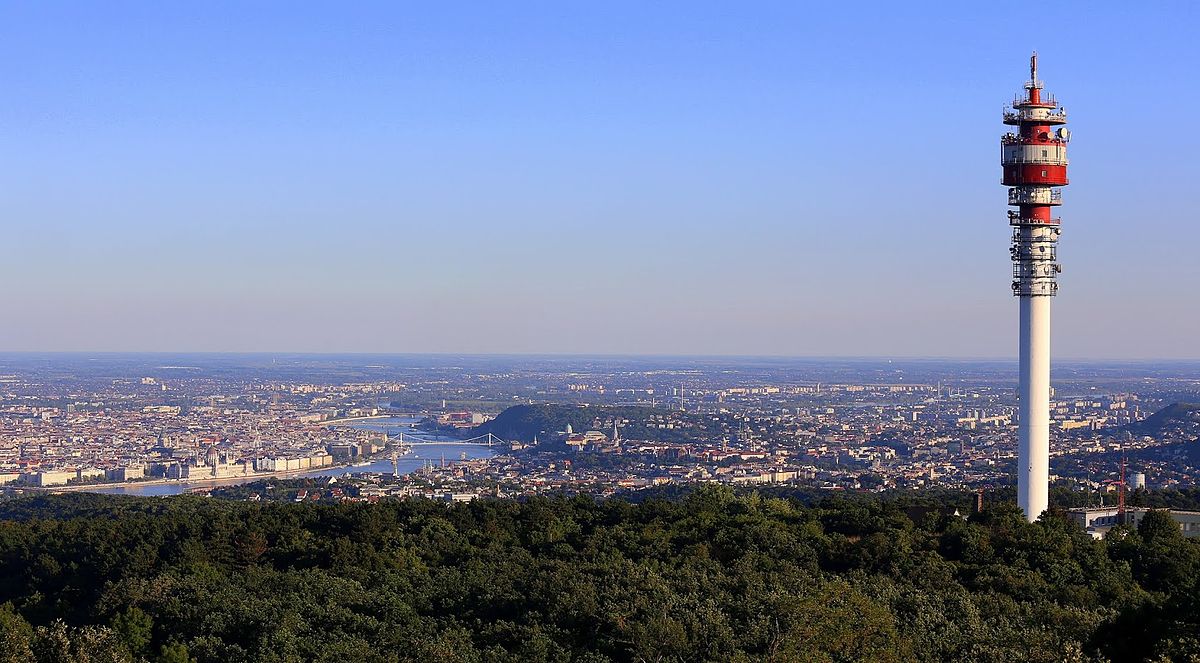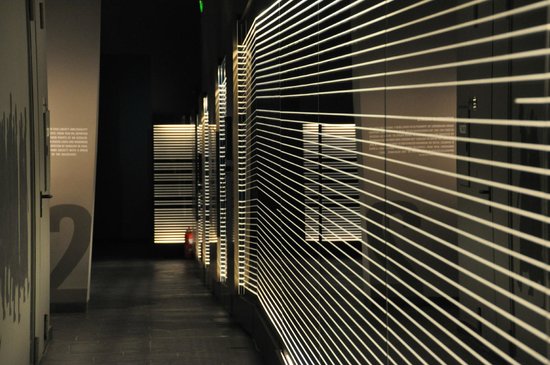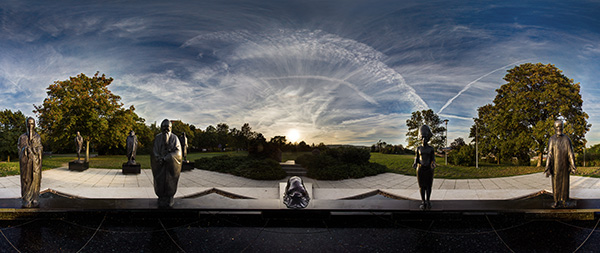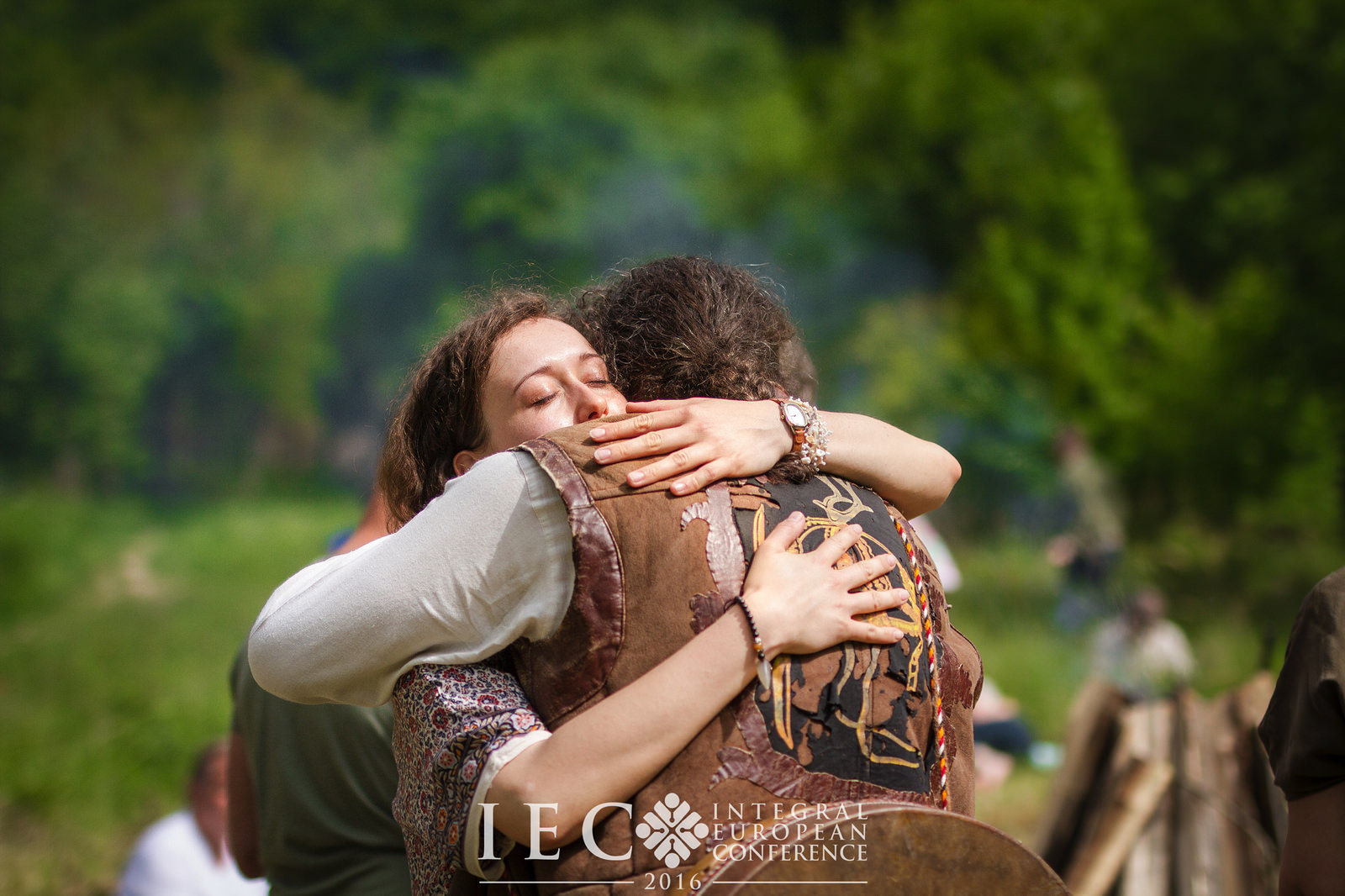We visit new places this year! If you have been with us on the tour in 2014 or 2016 you’ll see new places this time. Some photos on this page are depicting sites that we will visit and some other photos illustrate the atmosphere of the communal journey from last year (ones with the IEC2016 logo).
Day1 Monday, the 28th of May
9:00 Leave Hotel Azur, the IEC venue
10:45-12:00 Geological Site “Hegyestű” with Nature Meditation
“Take breaths of fraish air in nature after the conference and get a spectacular view of Lake Balaton from the National Park!”
12:00 Leave the National Park by bus to have lunch in Csopak
13:00-14:00 Lunch in Csopak
14:00-15:30 Scenic Drive to Pannonhalma Abbey
15:30-18:30 Explore the Medieval Pannonhalma Abbey and its Herb Garden
18:30-19:00 The bus will take us to the Pannon Restaurant for dinner
19:00-20:30 Dinner
21:00 Hotel Garzon Plaza in Győr
Rest, relax in the spa, and socialize with your fellow integralists! Enjoy reminiscing about the unusual sights you have seen this day.
11:30-13:30 Dual Sweat Lodge Ceremony – Male and Female Lodges
Surprised to find a sweat lodge in Hungary? Did you think it is a Native American ceremony only? It has been scientifically proven that sweat lodges were found also in Europe, not only in North America. Ancient Hungarians like Attila the Hun and his predecessors liked to use this purifying and praying ritual—the “spiritual sauna.” The owner of the Tengri Shaman Ranch and our lodge leader is Zoltán Sólyomfi, who studied the ancient Hungarian ways and integrates them into the postmodern spirituality of today’s Hungary. His name “Sólyom” means falcon— fi means “the son of,” so “Sólyomfi” means “the son of the falcon.” Falcon is an ancient Hungarian totem animal often appearing in ancient tales and legends.
Since the 1990s, Sólyomfi has devoted his life to studying ancient Hungarian spirituality. He is the organizer of one of Europe’s biggest global shaman gatherings, the Sun Deer Fesitval, a gathering of the “ones with the knowledge.” Shamans from Europe, Russia, Asia, North America, Central and South America, and Australia all come to Hungary each year for this festival, where they lead ceremonies and exchange wisdom.
During our tour, we will have the privilege of visiting Solyomfi’s farm and participating in a ceremony with him. Thus we will get an insider’s view of the original spirituality of Hungarians before Christianity took over 1,022 years ago. For us, this will be a journey back in time but also a journey within ourselves in the here and now. We will experience an aspect of postmodern spirituality where pre-modern, modern, and postmodern merge. Solyomfi’s female partner will offer a sweat lodge for the women to take place simultaneously with the men’s.
Sweating releases toxins from the body; prayers, chants, and singing cleanse the soul; and by revealing your worries and joys and putting them into words, they also help participants along their spiritual paths. First we will hear teachings, stories, and legends from Sólyomfi and prepare for the lodge. Then we will finish with lunch.
13:30-14:30 Open-fire, cauldron-cooked lunch. Rest. Integration.
The cost of the ceremony and lunch is included in the price, and the Center also accepts donations to support its functioning.
14:30 Bus leaves for Budapest
16:00-19:00 Budapest: The Buda Castle Experience – the Vár
Have a walking tour in Buda Castle Hungary’s main UNESCO World Heritage Site in Budapest!
Budapest, Hungary’s capital, is full of exciting sites to see! The number one must-see is the UNESCO World Heritage Site in the middle of the city: Buda Castle. Picture an apple cut in half with a line in the middle. That middle line is the Danube River, which divides Budapest into two equal parts: Buda on the left and Pest on the right. Buda is hilly and green; Pest is flat and urban. Buda Castle sits on Castle Hill, towering over the Danube on the Buda side. Buda Castle is the historial castle and palace complex of Hungarian kings.
In 1265, at the same time Mewlana Rumi was writing poems, meditating in Turkey, and establishing the Order of the Whirling Dervishes in Konya, Buda Castle was built in Hungary. Besides the kings of Hungary, the Ottomans, the Habsburgs, Maria Theresa, Franz Joseph, and Sissy (Queen Elisabeth) were all linked to this castle at different points in time.
Day 3, Wednesday the 30th of May
8:00 Leave hotel
8:30-11:00 Authentic Turkish thermal bath experience at Király Fürdő (The King’s Bath)
Have a plunge in the healing warm thermal waters of a 500 years old Turkish bath in Budapest!
Hungary is also called “the home of 1,000 hot springs,” and no visit to Budapest is complete without immersing oneself in the thermal waters that spring up from deep within the Earth under the city. Buda is full of caves, many of which have water in them. A whole international cave-diving tour industry operates under the Buda Hills part of the city! Many of these hot thermal waters are rich in minerals with healing effects, and locals and tourists alike enjoy the baths in both Buda and Pest.
What makes it even more interesting is that some of these (renovated) baths are 500 years old! In the 16th and 17th centuries, Hungary was occupied by the Turks (Ottoman Empire) for about 150 years; the Turkish rulers discovered the healing effects of these thermal waters and built a number of spas all over Hungary. Some of the best Turkish baths are in Budapest, and one of these is The King’s Bath. That is where we will go.
Spas were (and still are) not only for bathing—here you can socialize, meet business partners, exchange information, relax, and refresh. Here people converse and even play chess while sitting in the bath, enjoying the beneficent effect of the thermal waters.
11:30-12:30 Top of the City View and Hike Point at Hármashatárhegy
Enjoy a full view of Budapest from the top of the Buda Hills while having a great walk!
This horror is difficult to heal from. No wonder that after the war many modernist orange families lived in complete denial and never told their children of their Jewish origin and past. Their children, the baby boomers, and their grandchildren often find themselves today in family constellations and psychotherapy, integrating and healing from the traumas of their parents and grandparents, and correcting family lies stemming from denial.
This explains why The Holocaust Memorial Center in Budapest, established by the state, is one of the few institutions in the world to focus entirely on Holocaust research and education. Here we also find countless stories of brave Hungarians who hid Jews or saved their lives. If you want to see what happened in Budapest during these times, watch the movie Walking With the Enemy (2013), also available on Netflix. (Surprisingly this has never been screened in Hungary.) Another one is the concentration camp depicting, Oscar-winning, Hungarian movie Son of Saul (2015).
16:00-17:00 Integral Tour Closing Circle and Farewell at the Philosopher’s Statue Garden on Gellért Hill
Meditate with Lao-Tzu,Buddha, Jesus, and Ghandi in the garden of Philosophers and say goodbye to your integral friends.
After emerging from our hour in the museum, we will lighten it up by going to the last stop on our tour, Gellért Hill, another beautiful green hill on the Buda side of the city, from which you can see both the hills of Buda and the plains of Pest. There we will find the postmodern Garden of Philosophers, a statue complex with some of the greatest spiritual people of all history—Lao-Tzu, Akhenaten, Abraham, Buddha, Bodhidharma, St. Francis of Assisi, Jesus, and Mahatma Ghandi—all standing in a cricle of contemplation and fraternity.
Vast open spaces, singing birds, and the gentle scent of spring can make the end of our tour unforgettable, as we join in our short closing circle and farewell hugs, ending our crazy and beautiful journey of IEC 2018.

